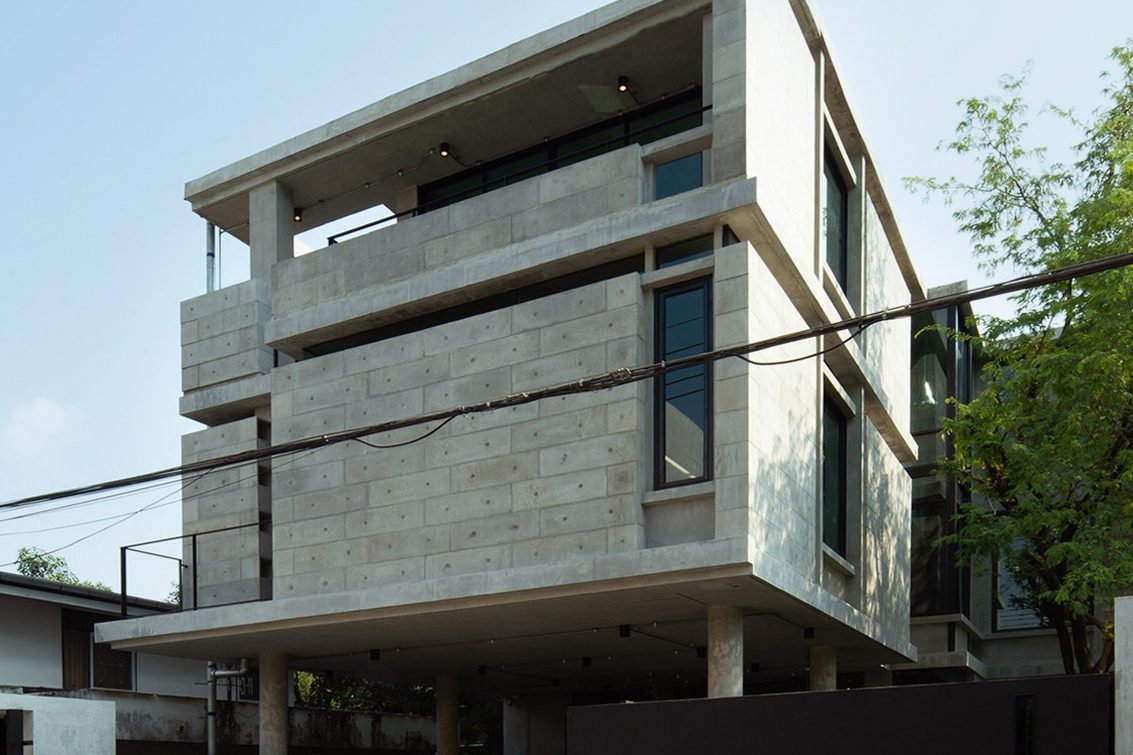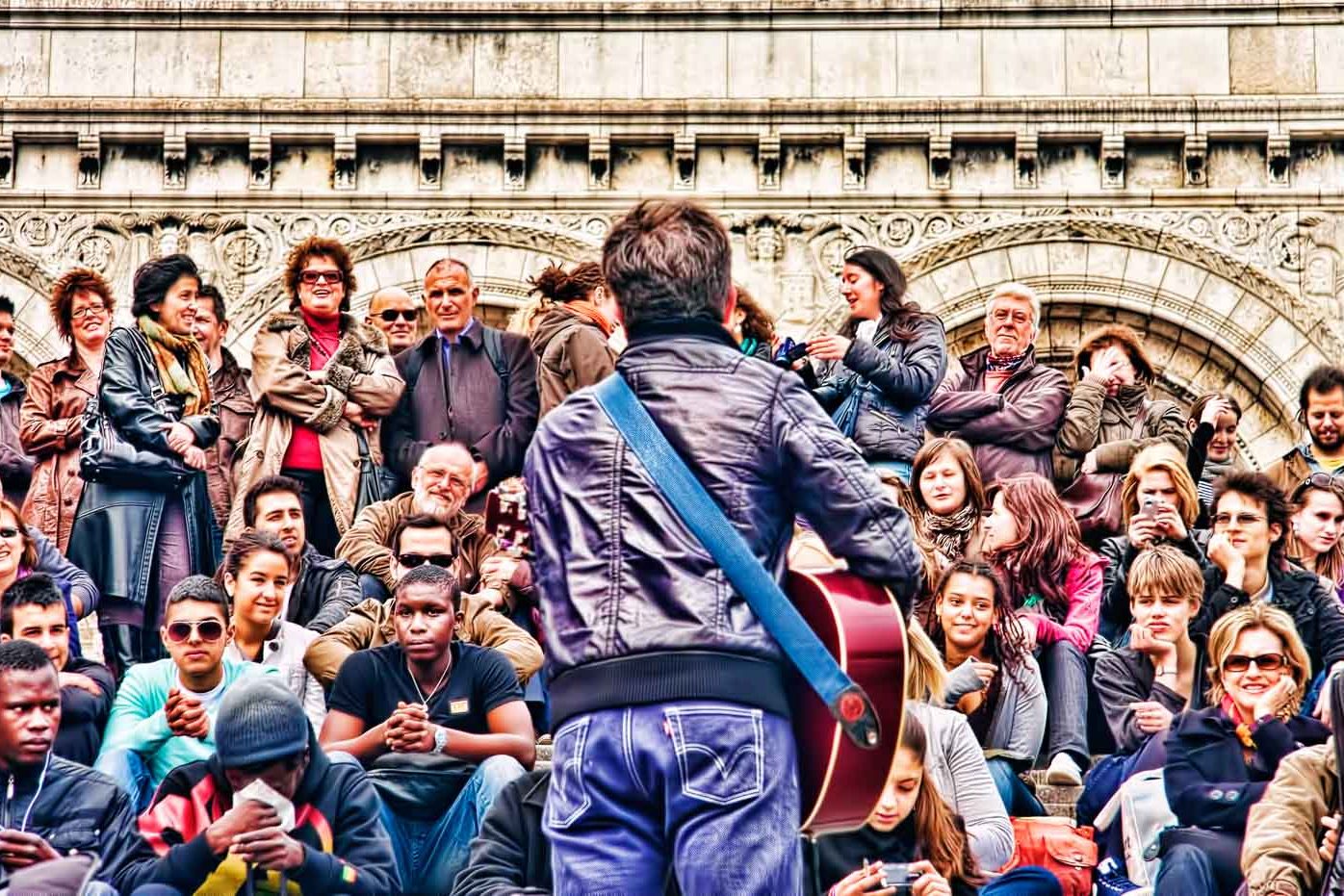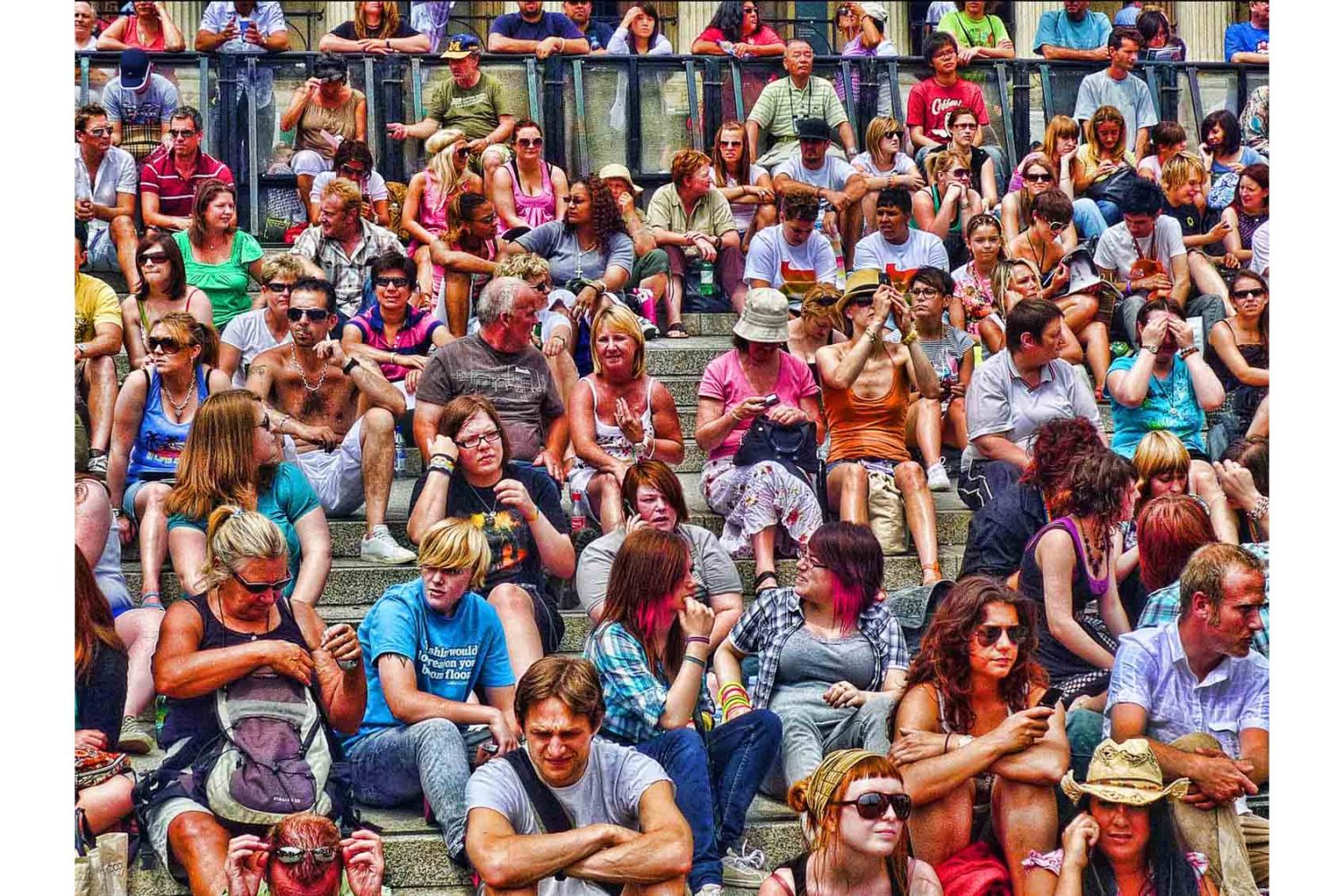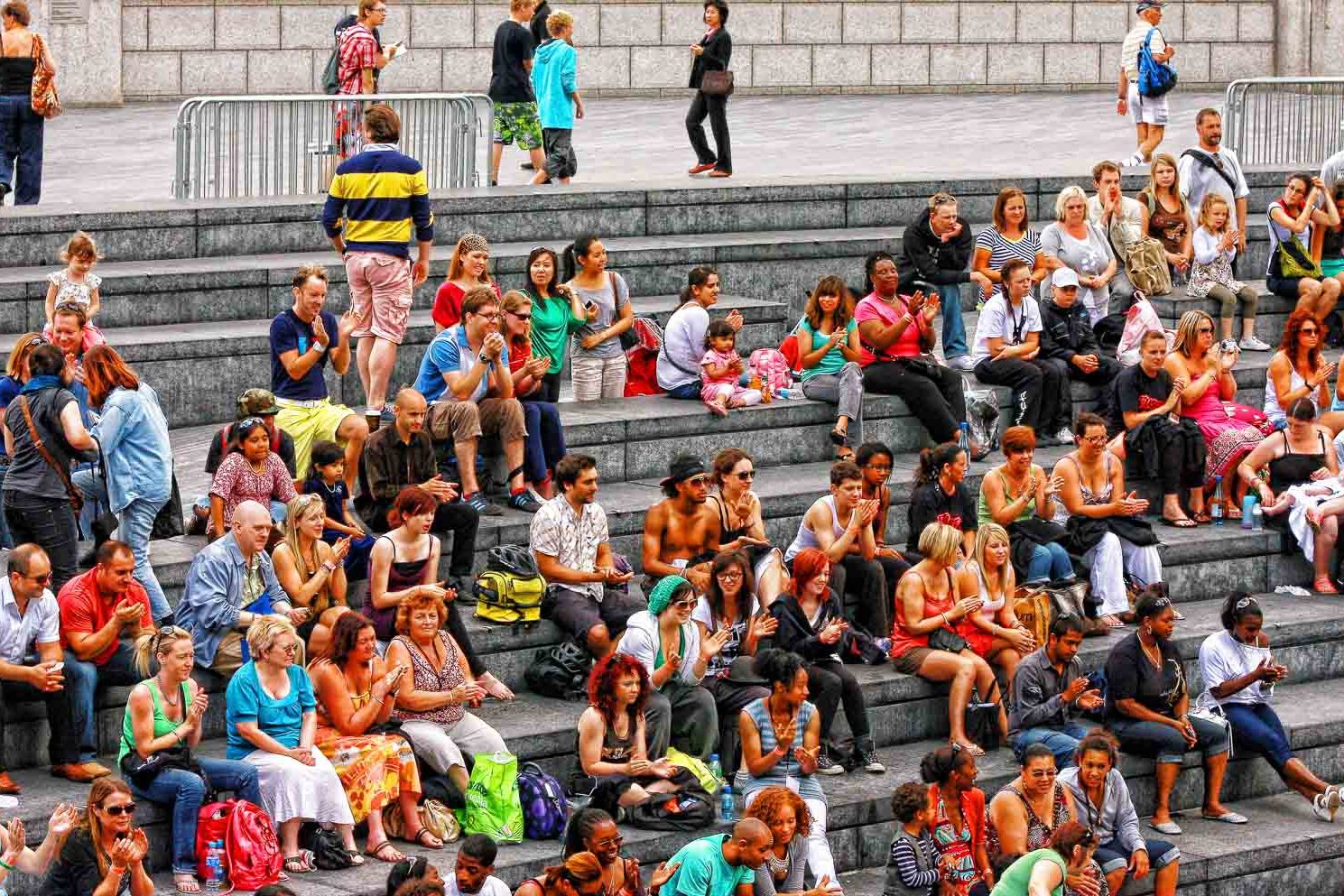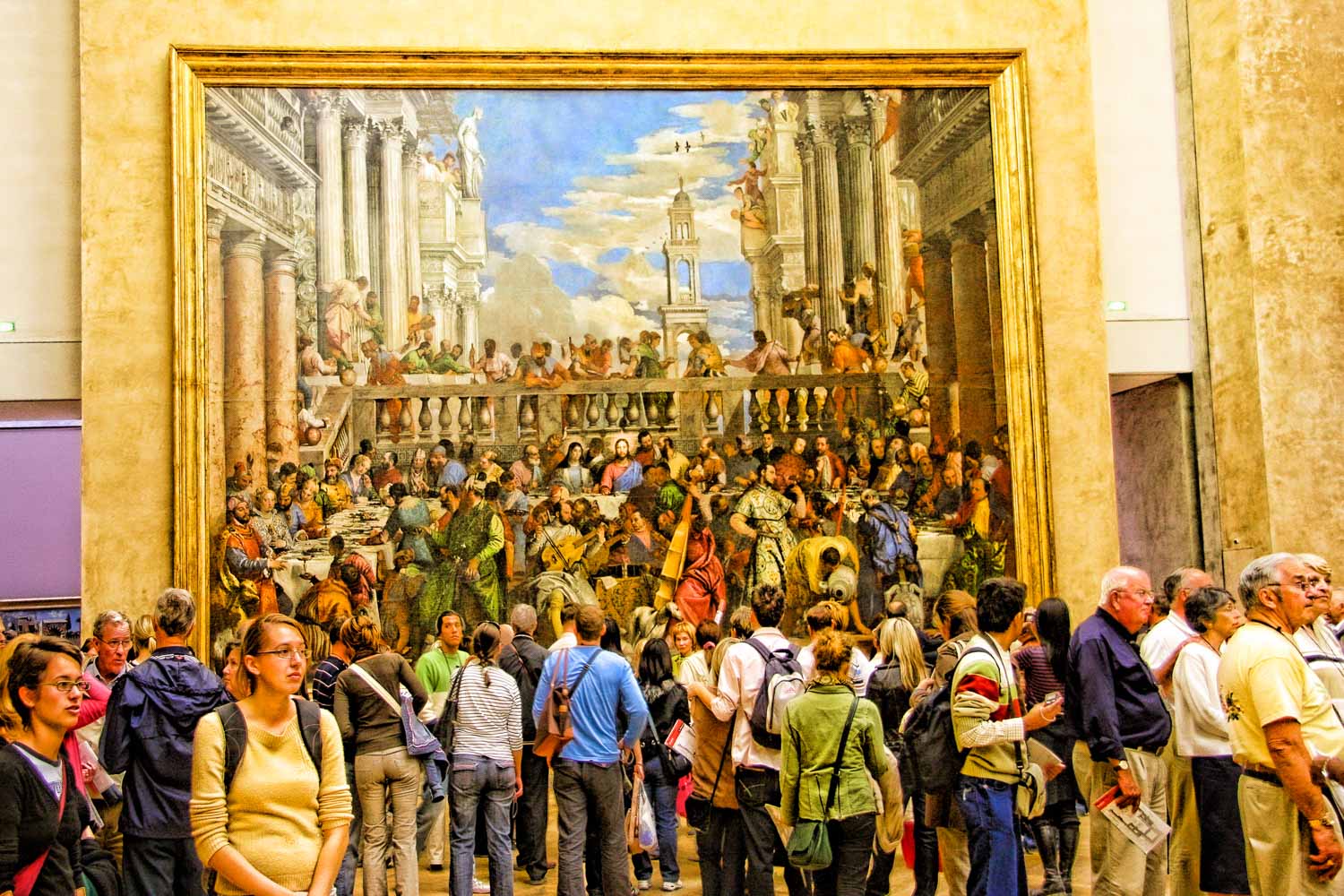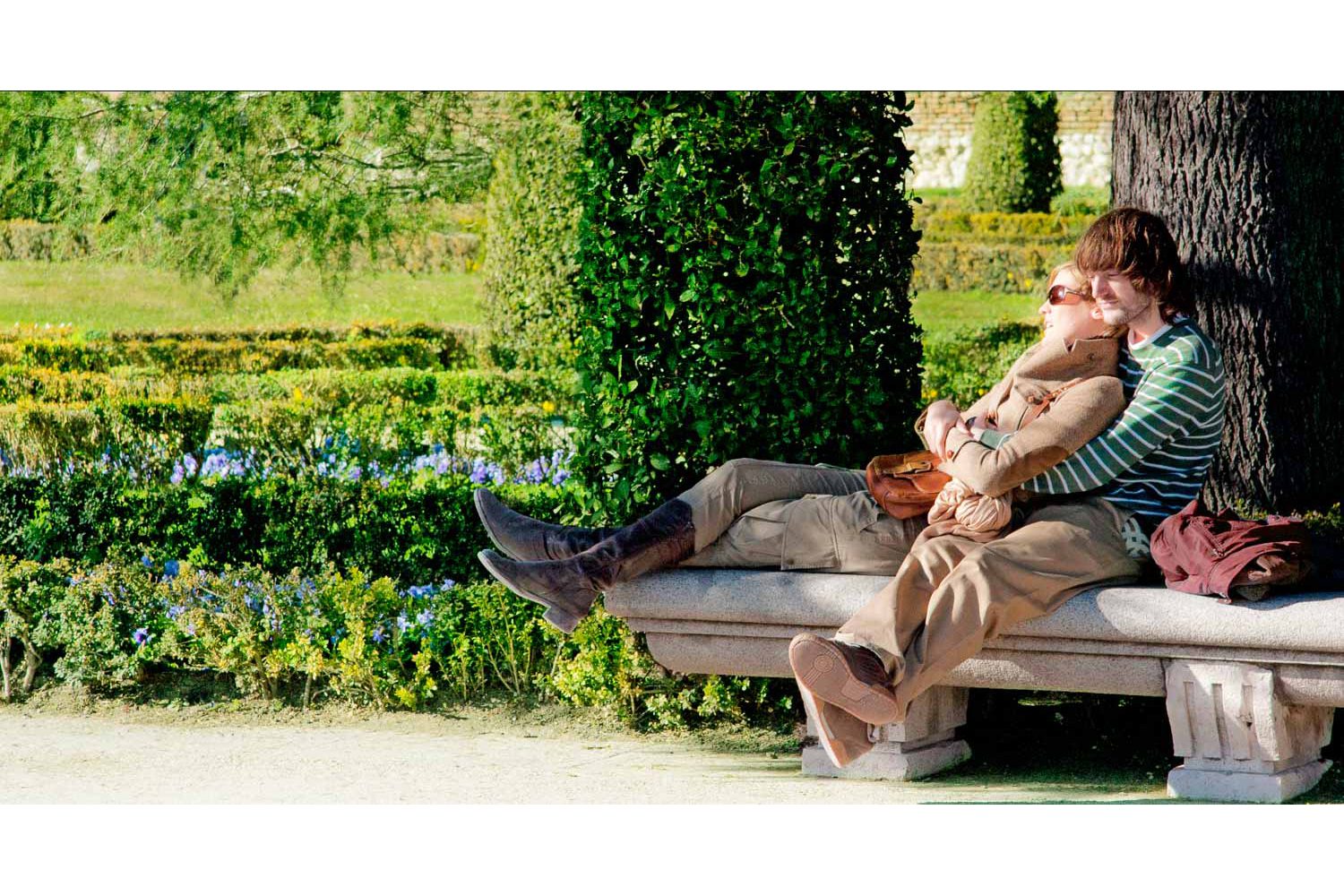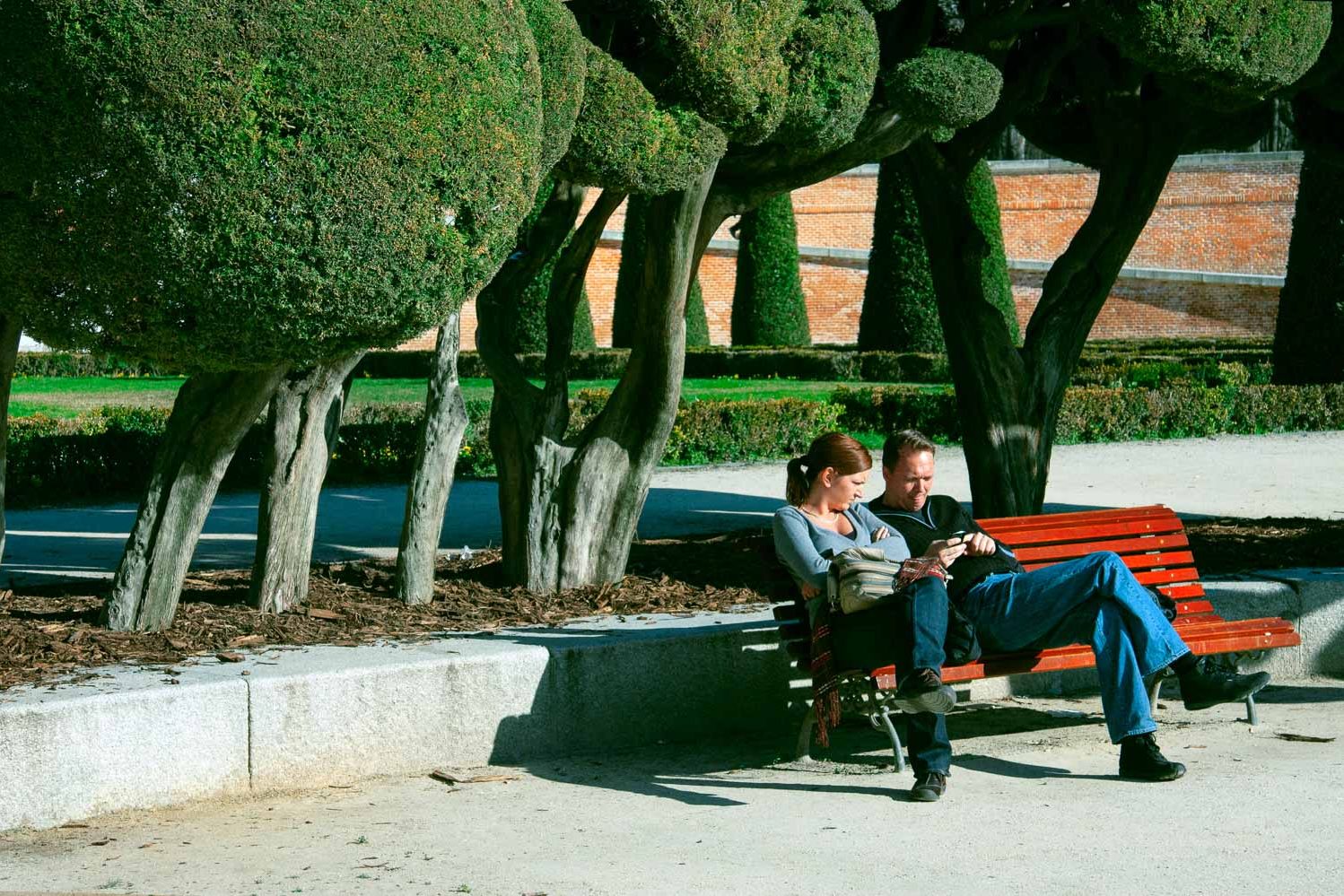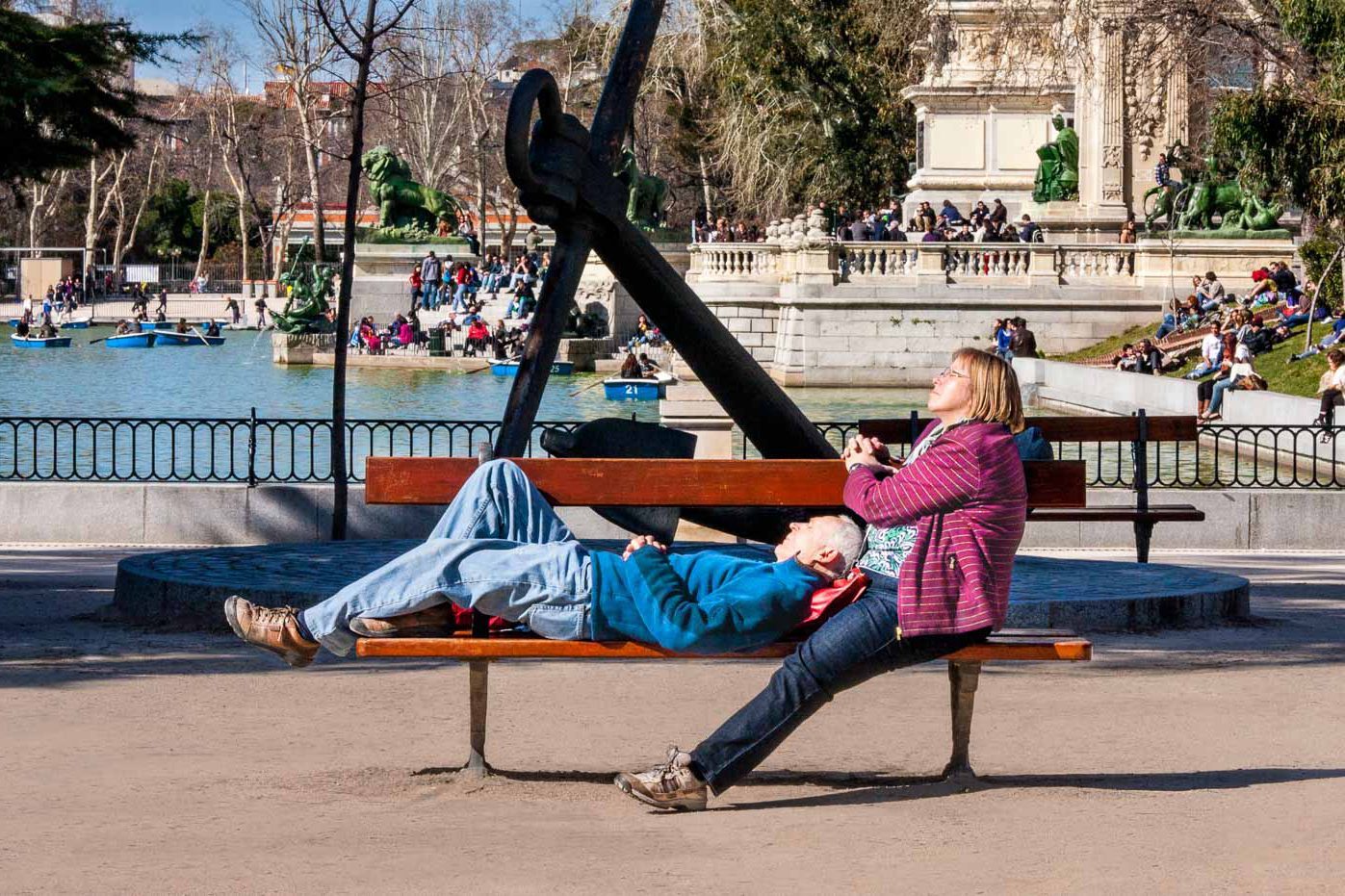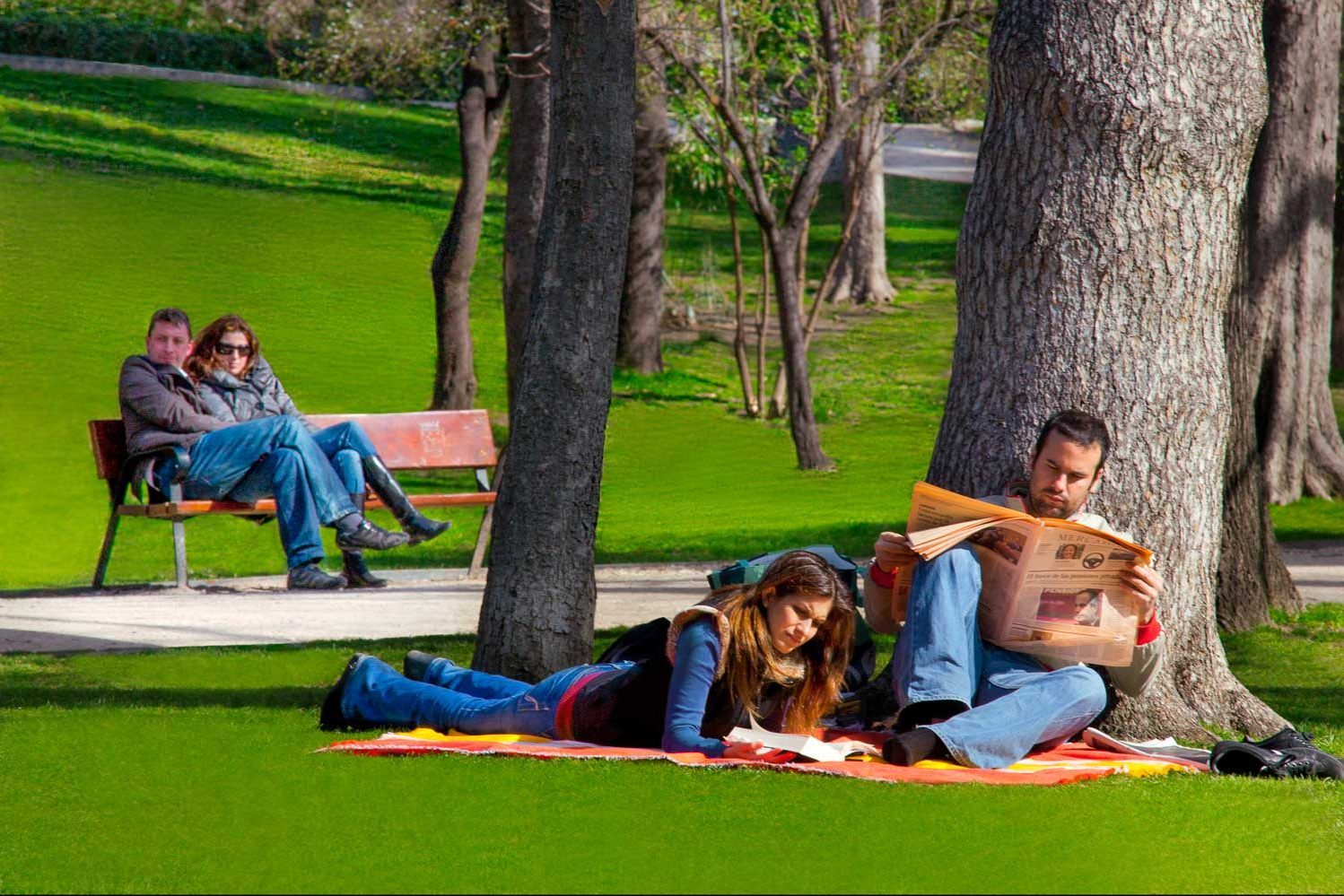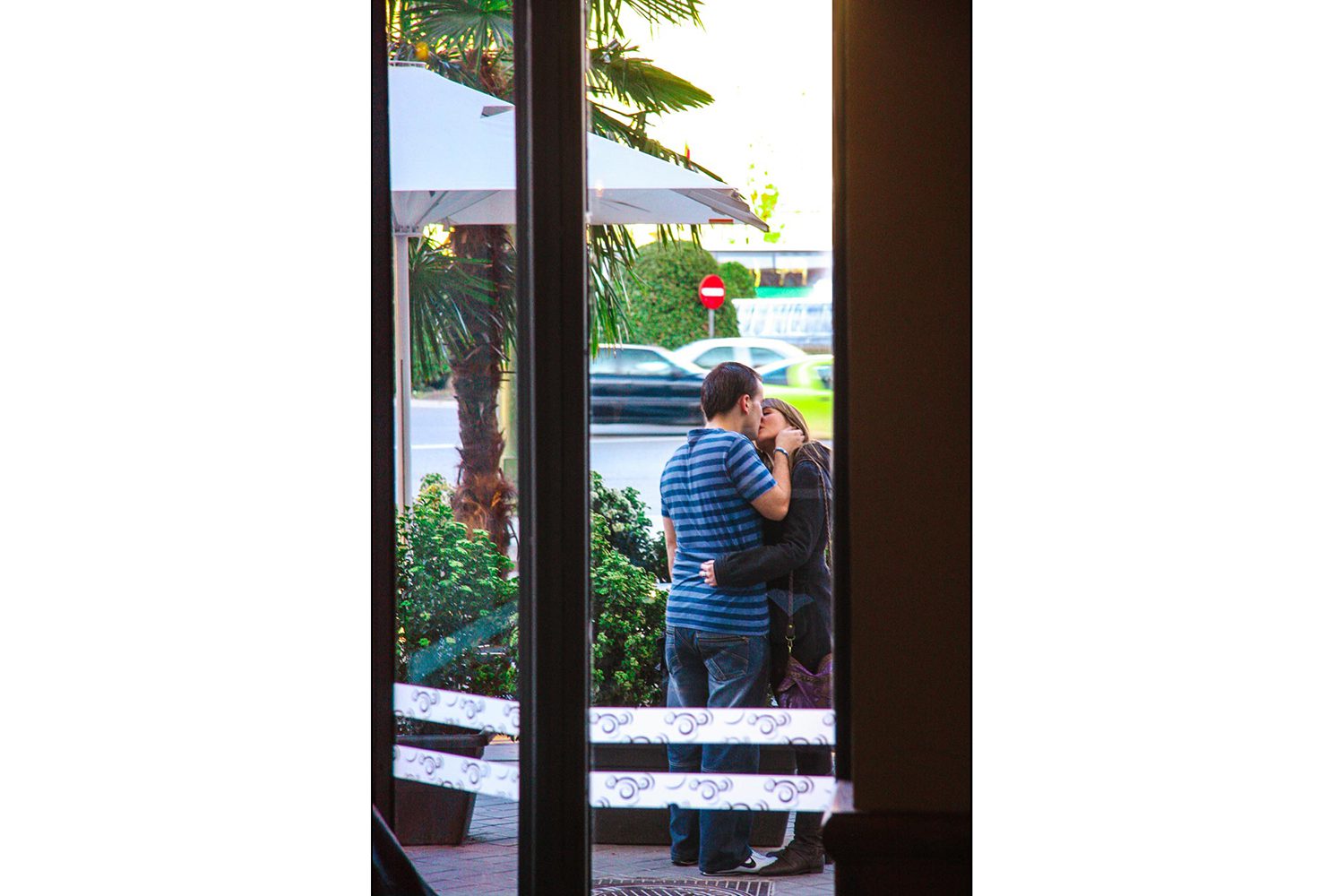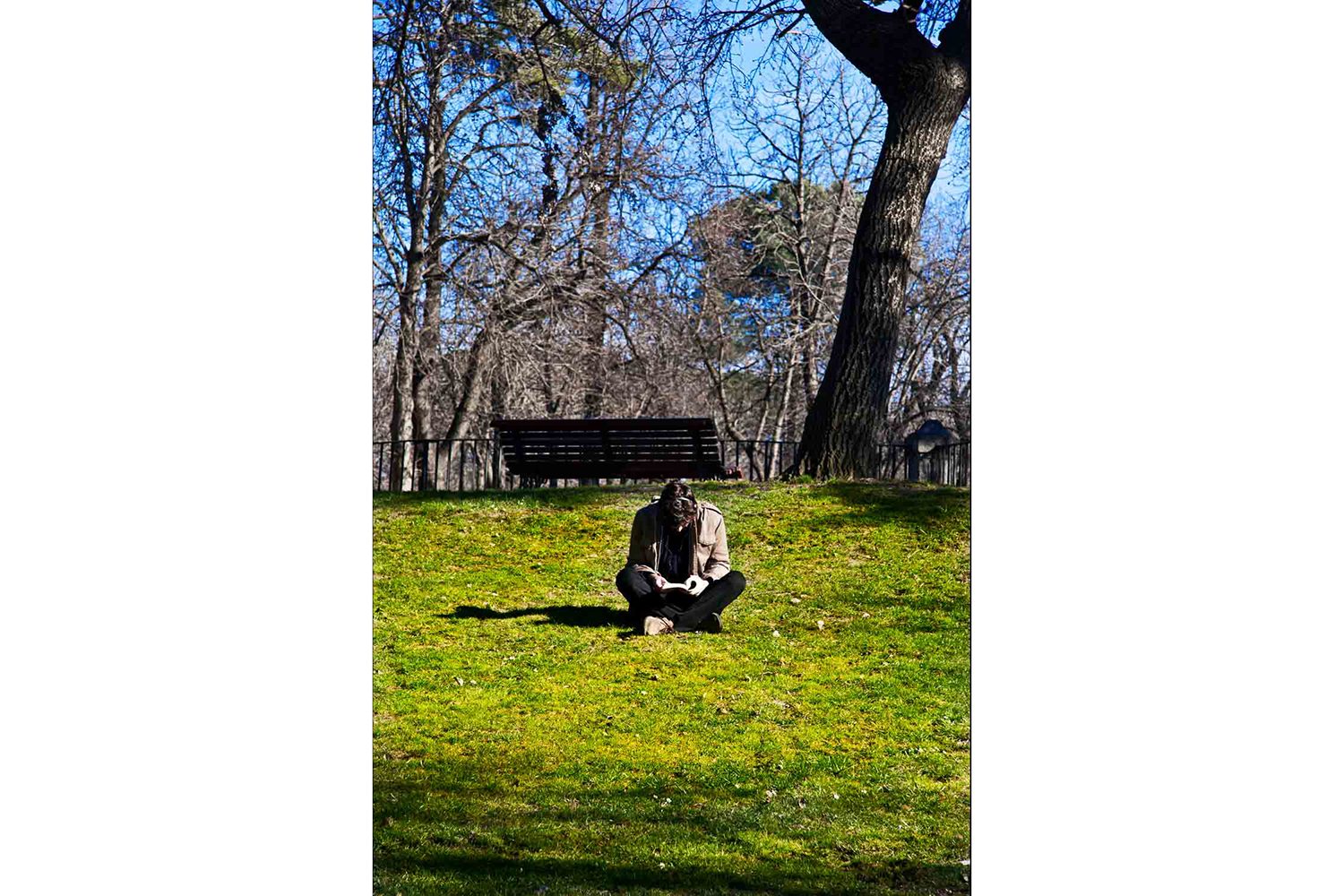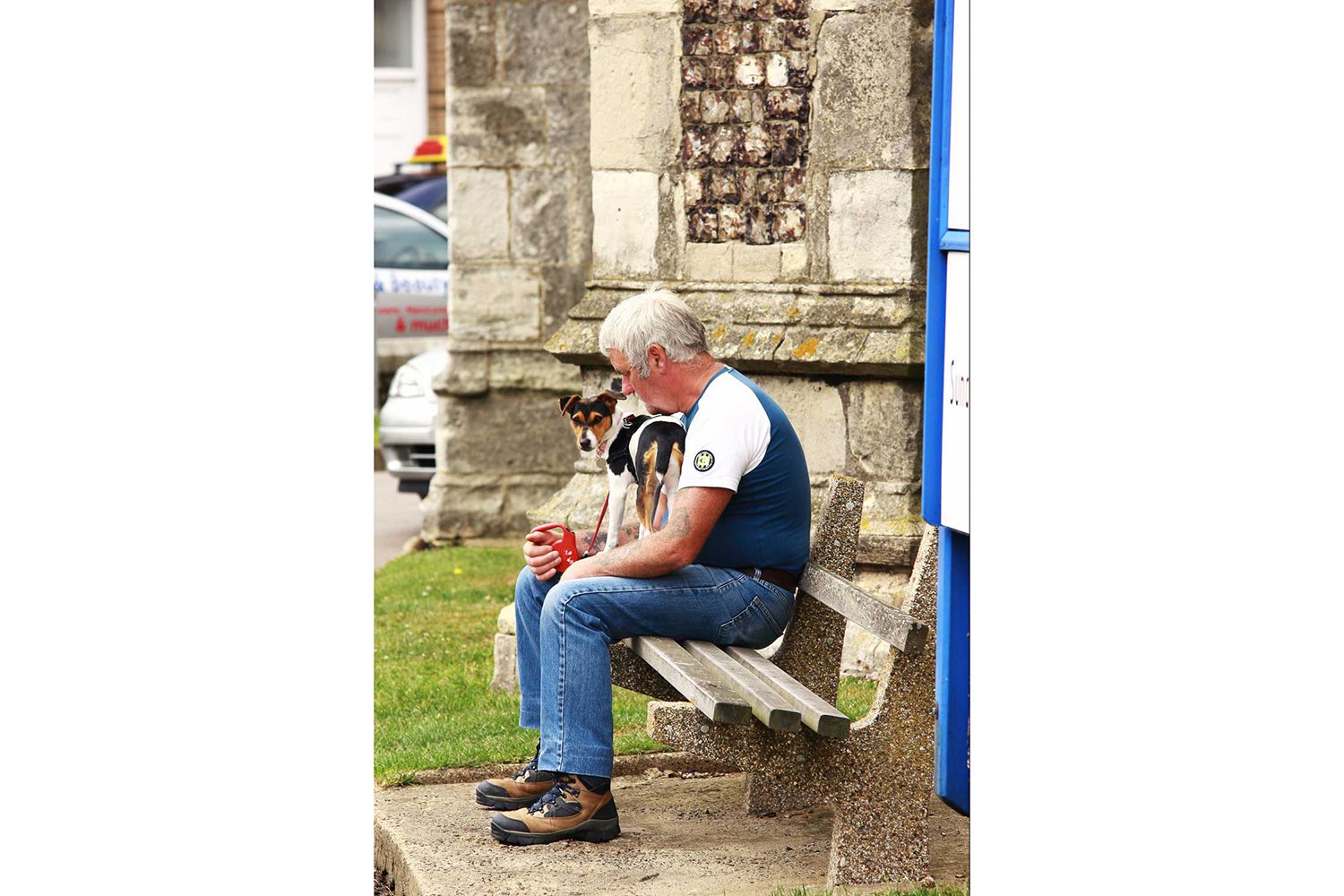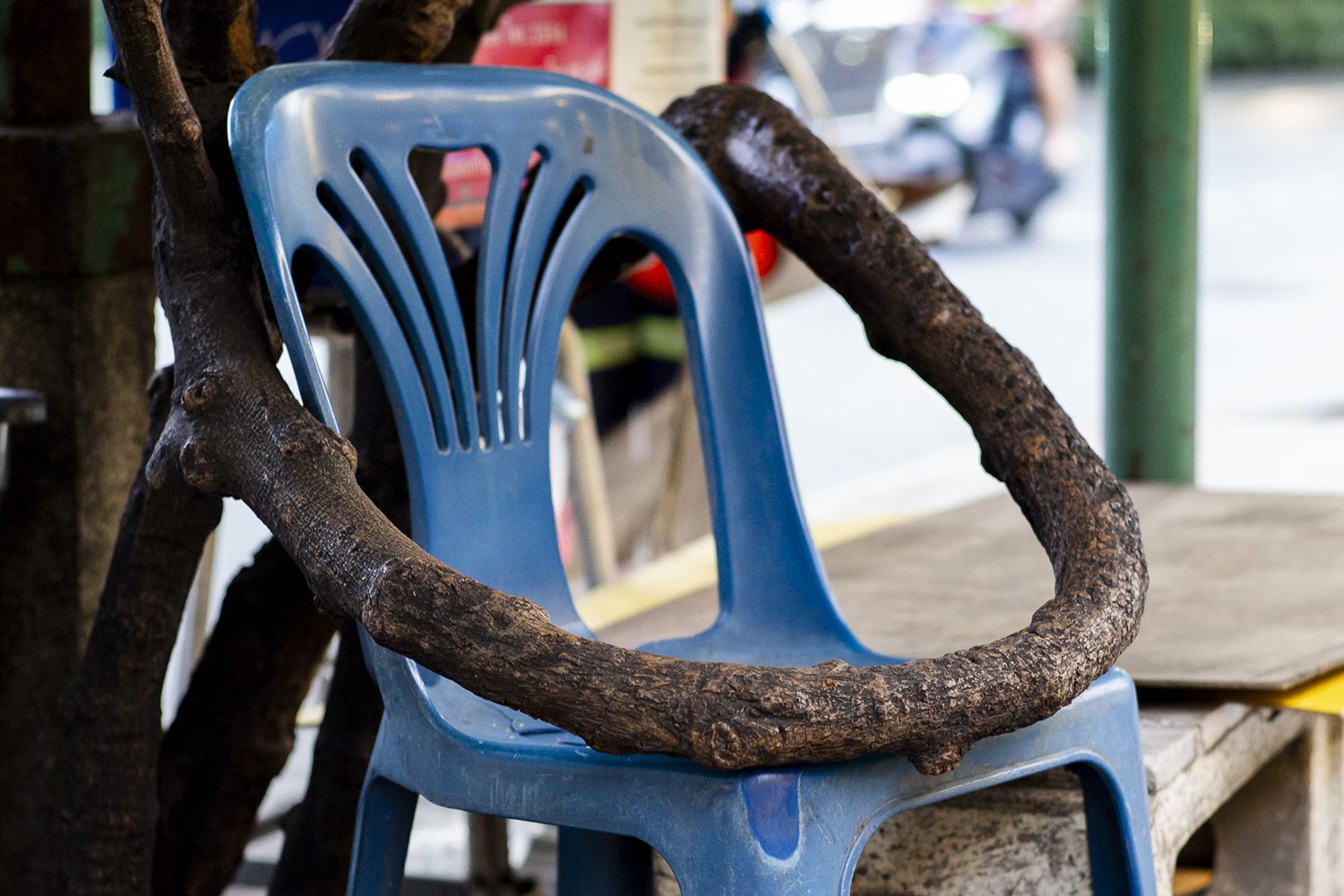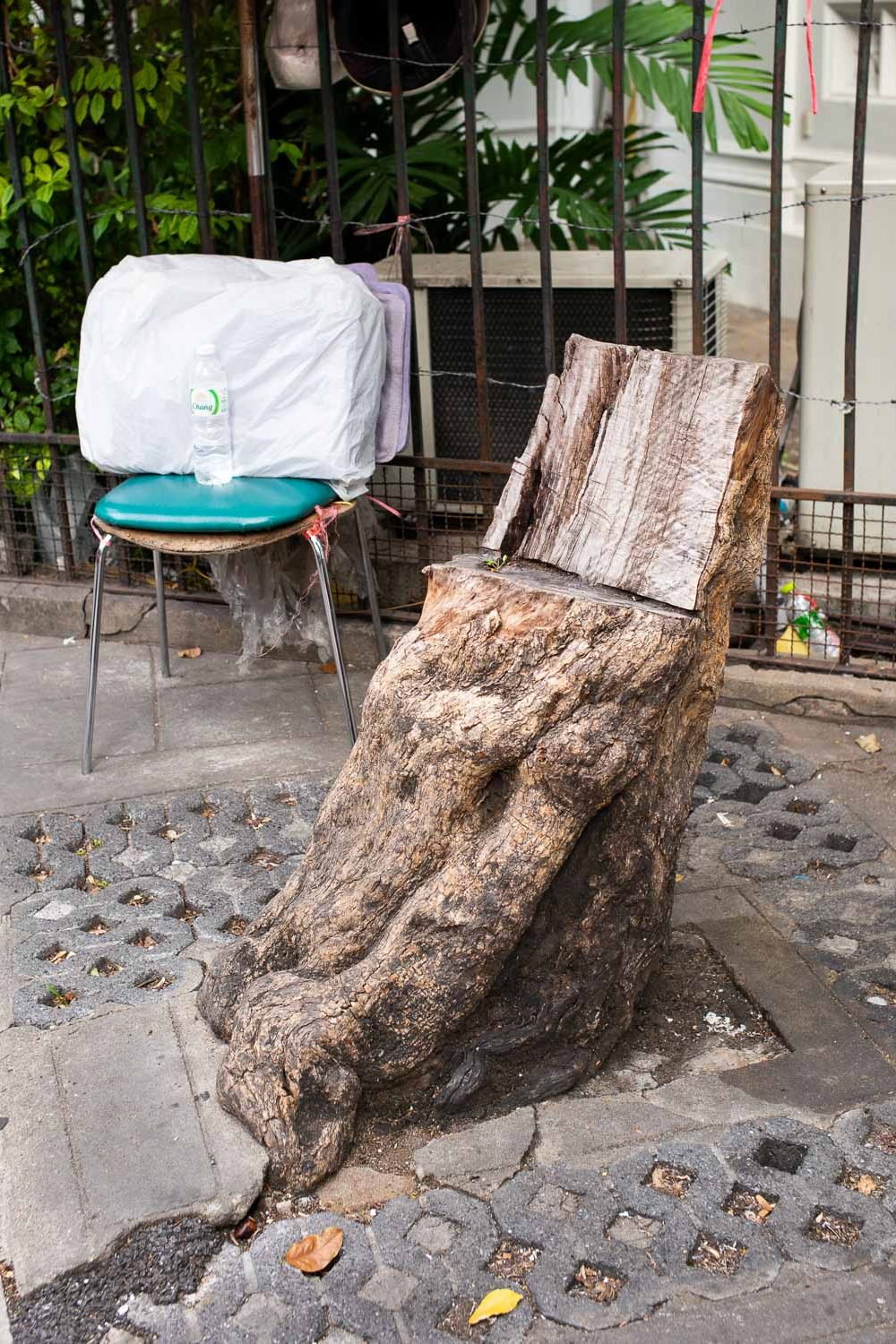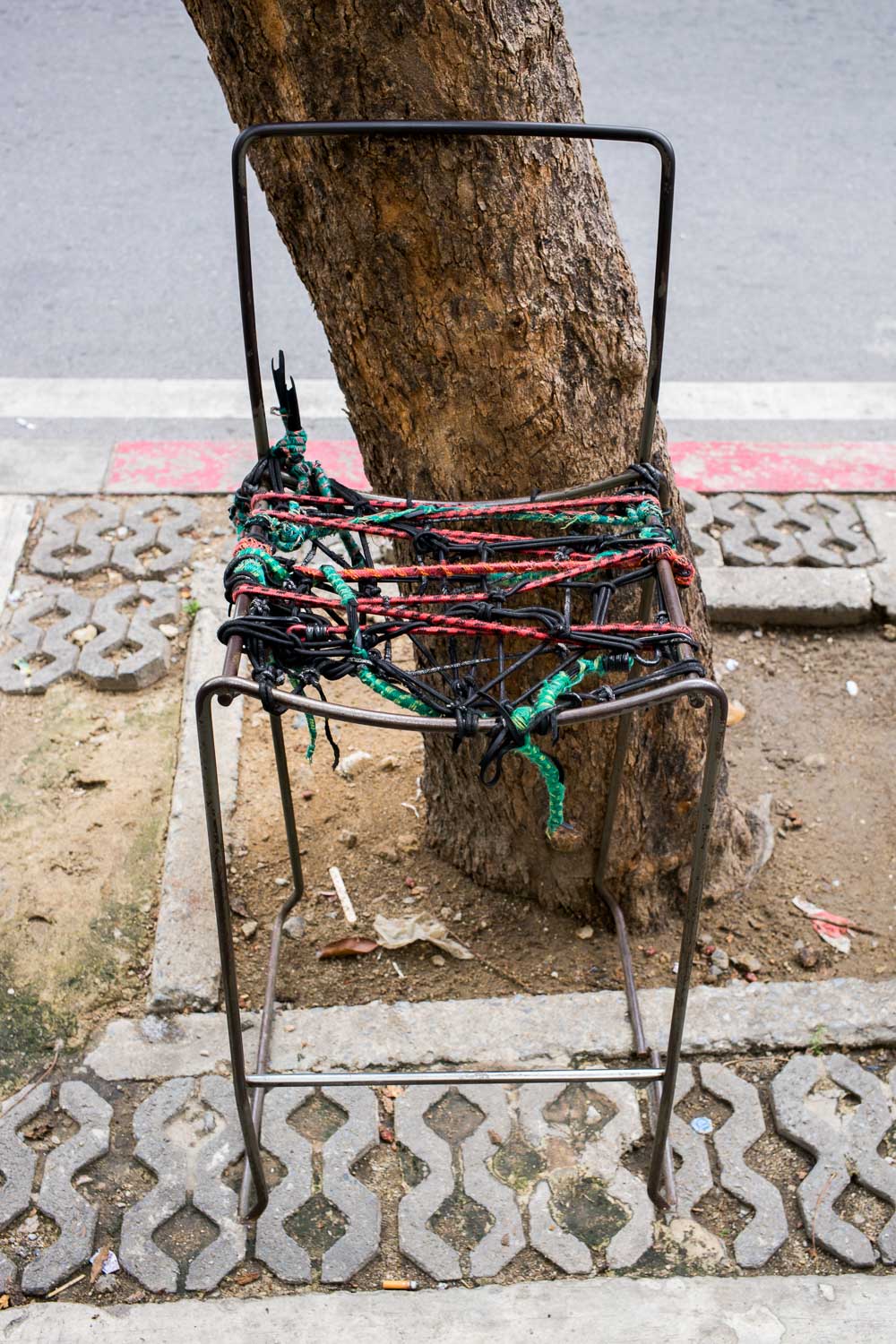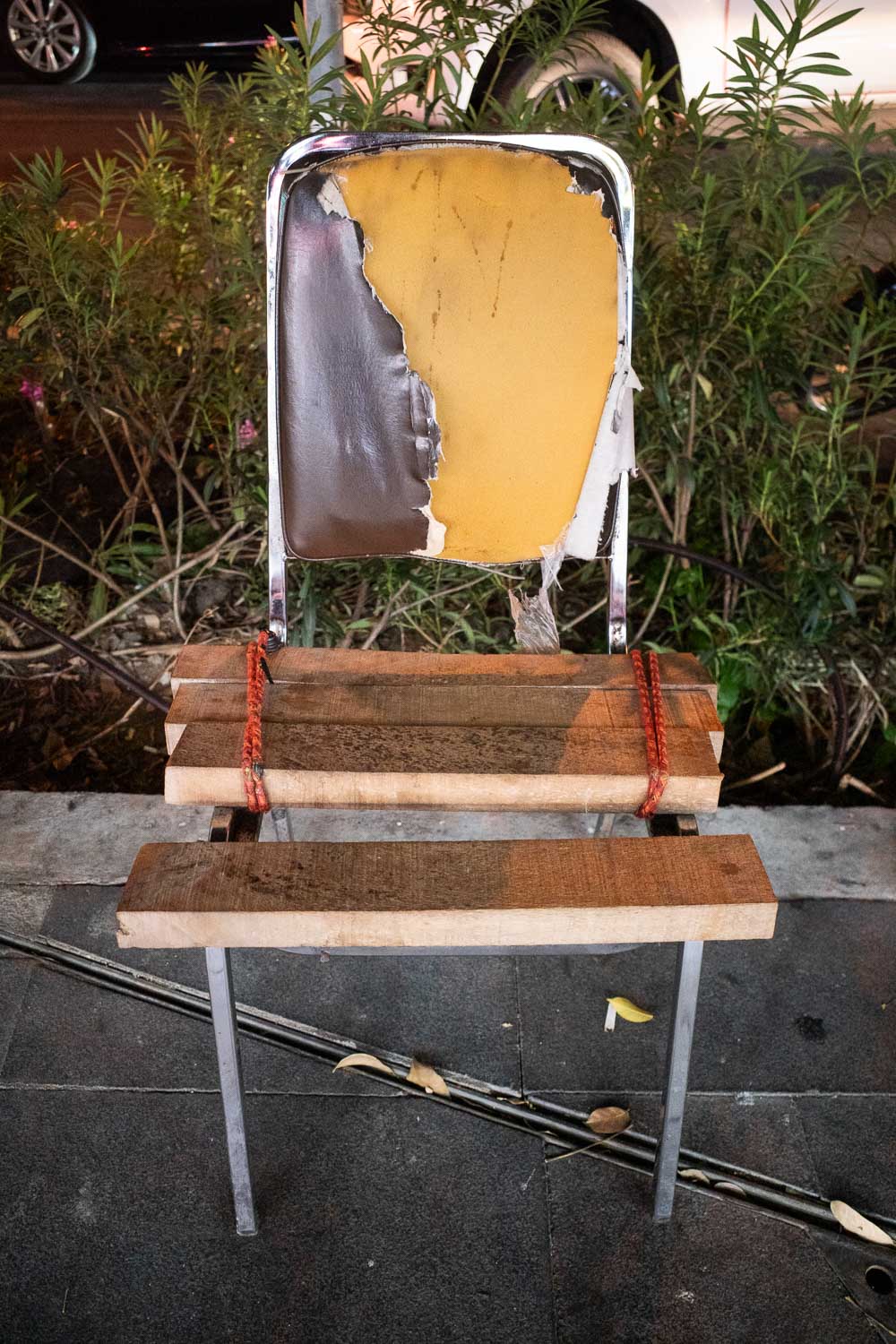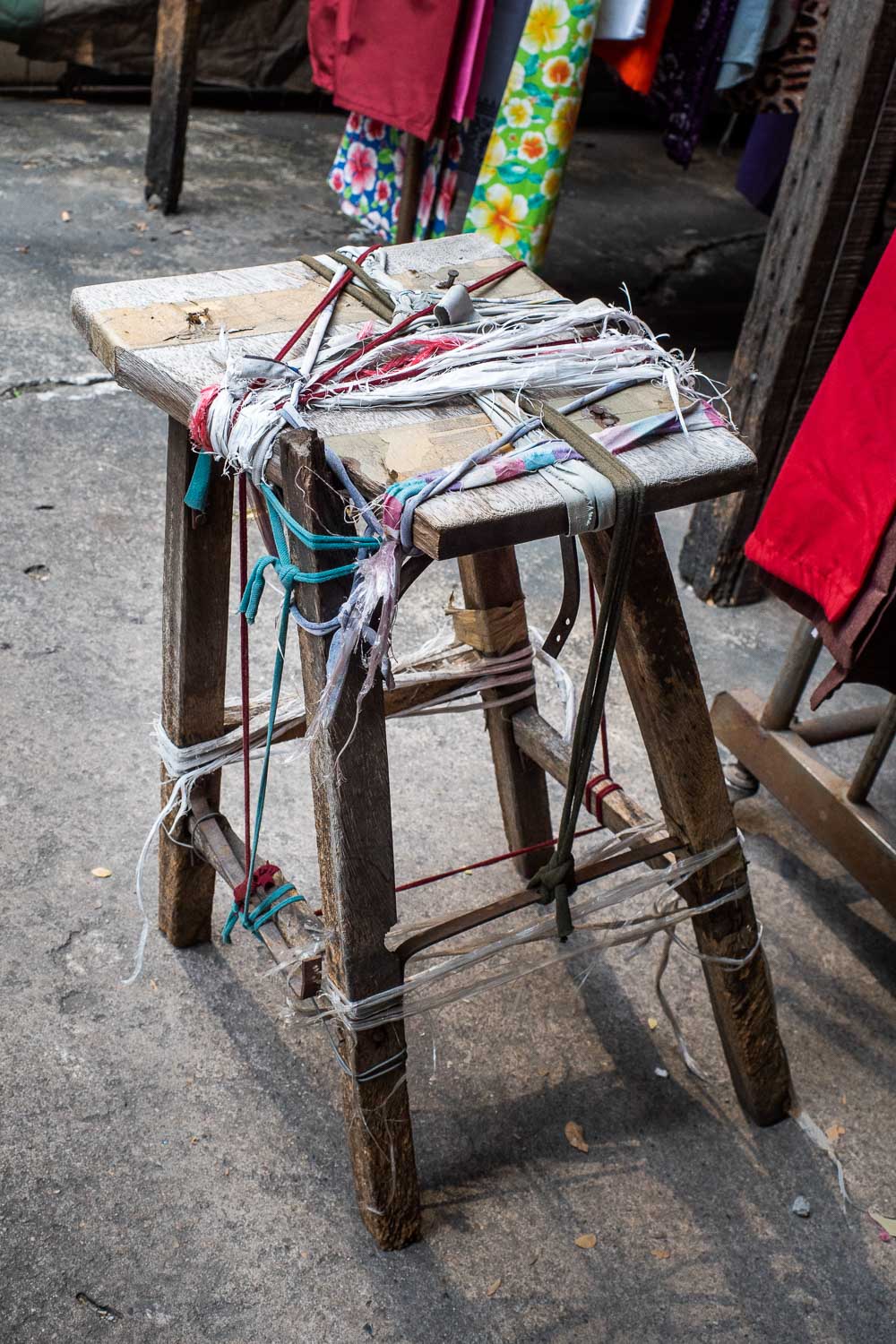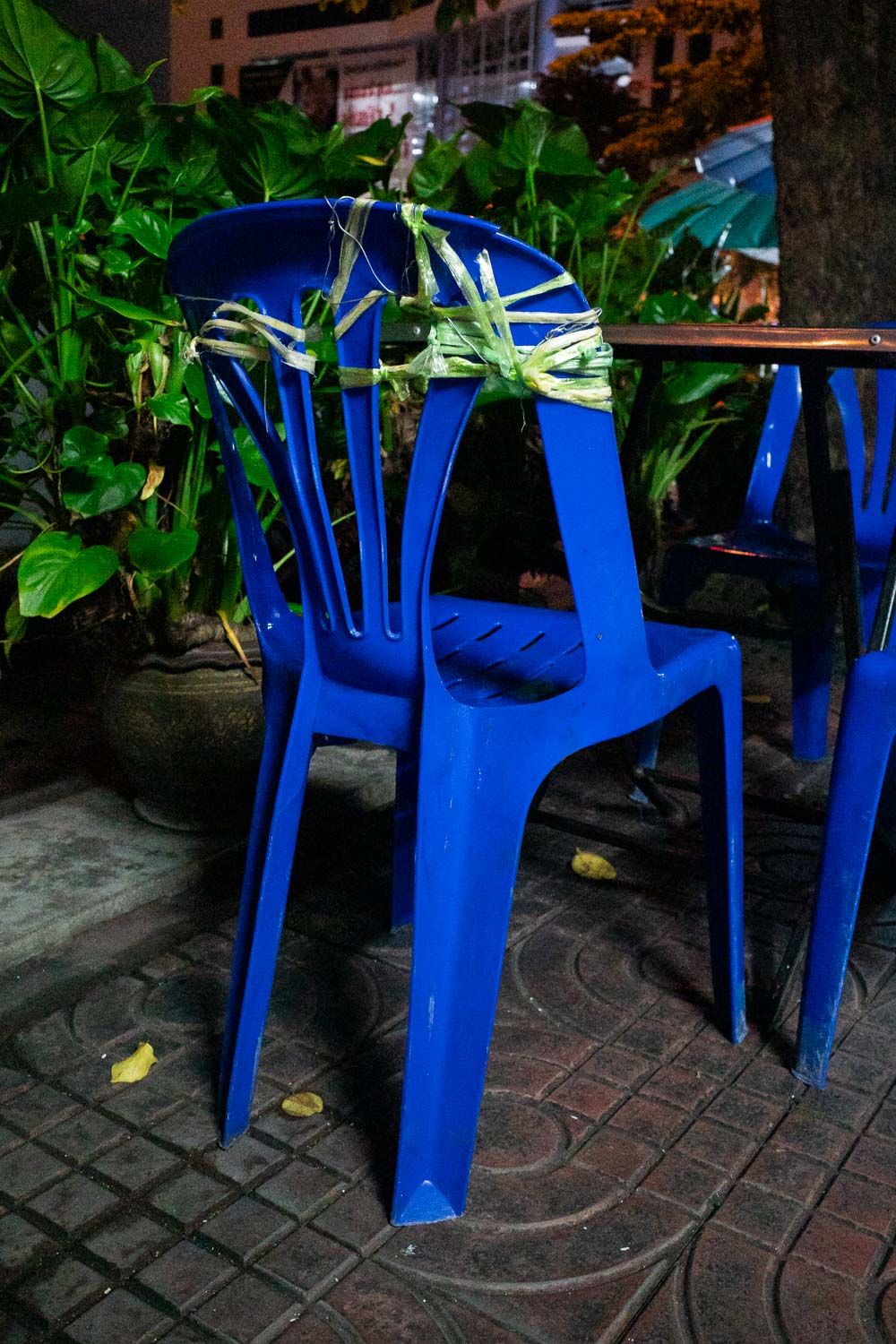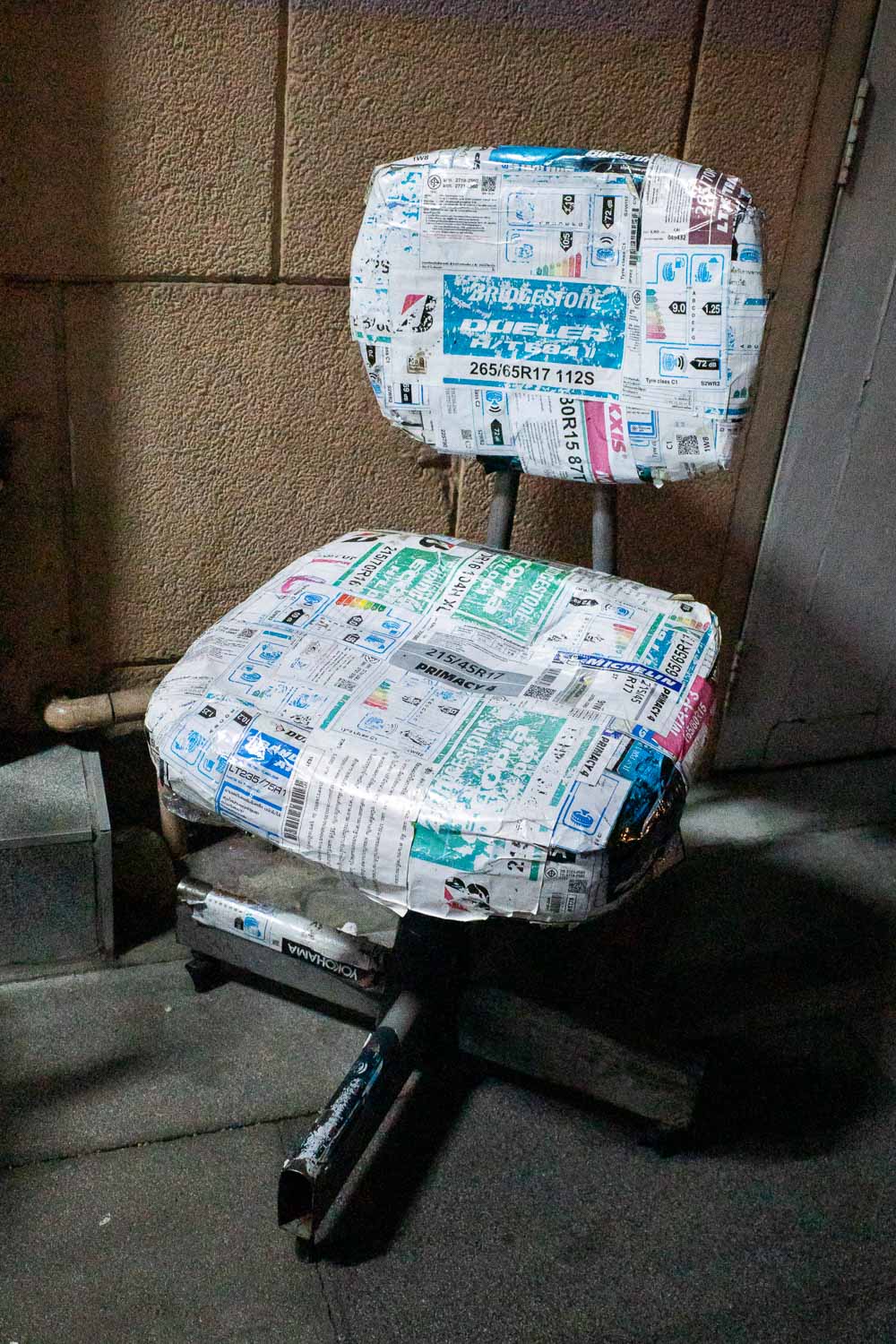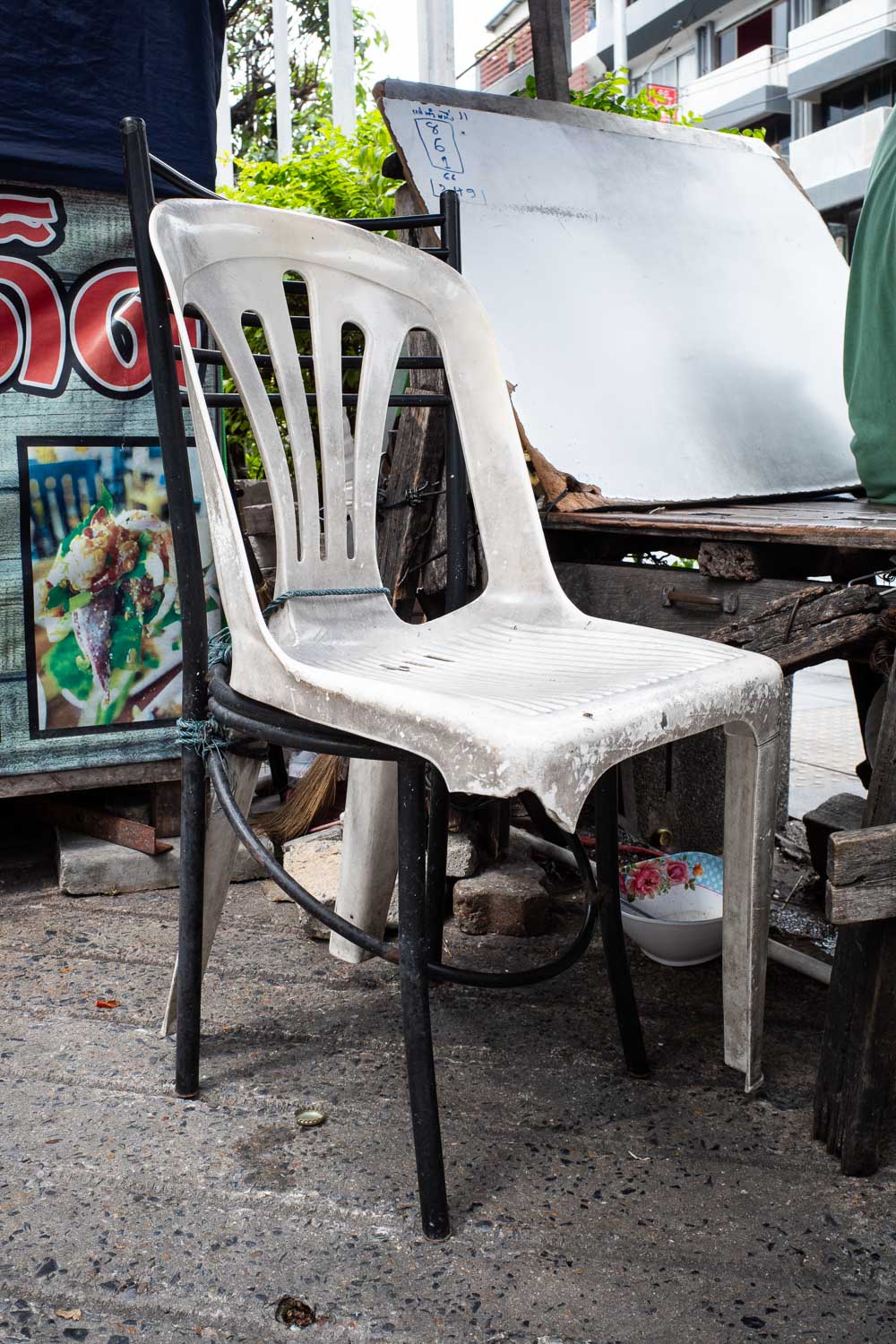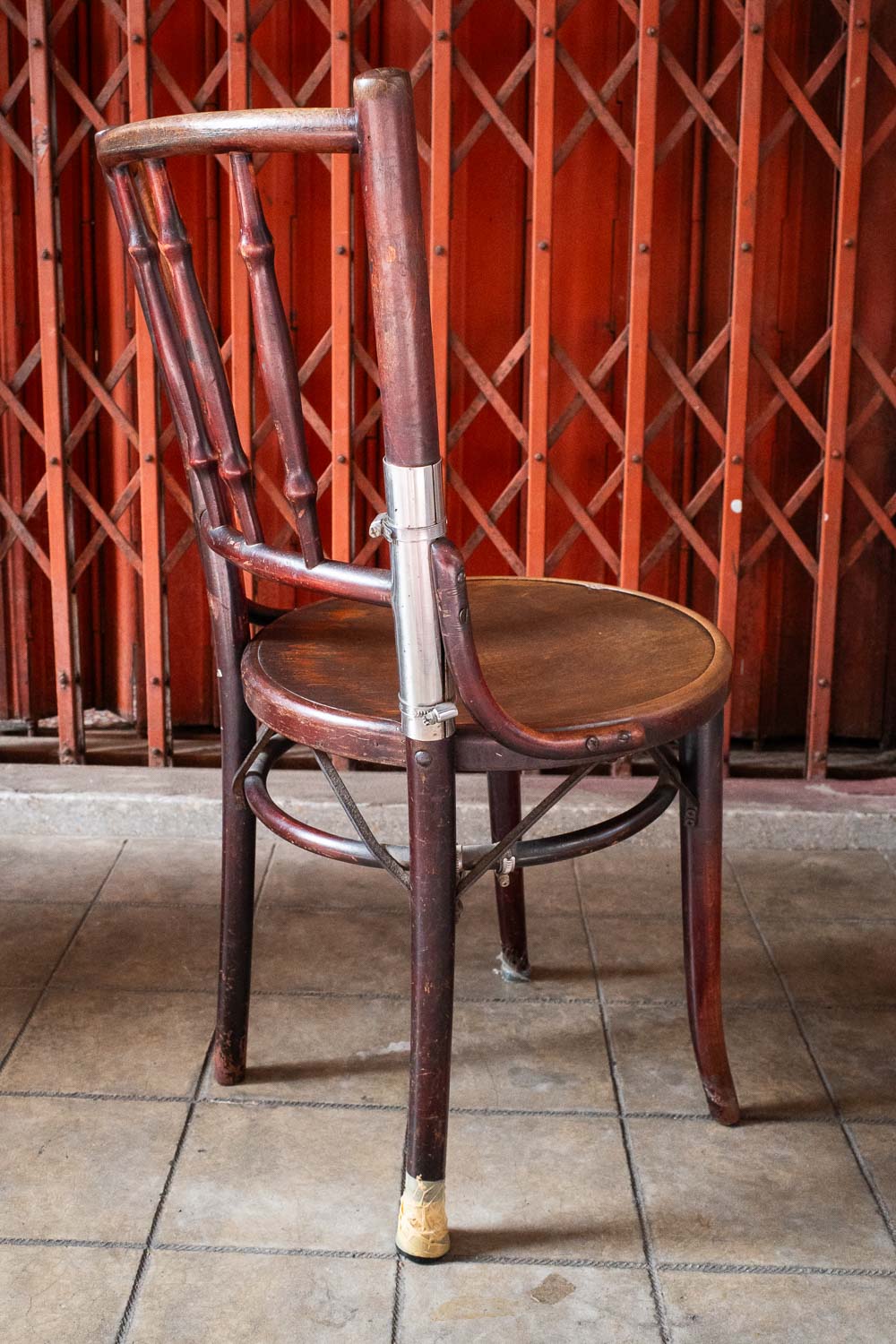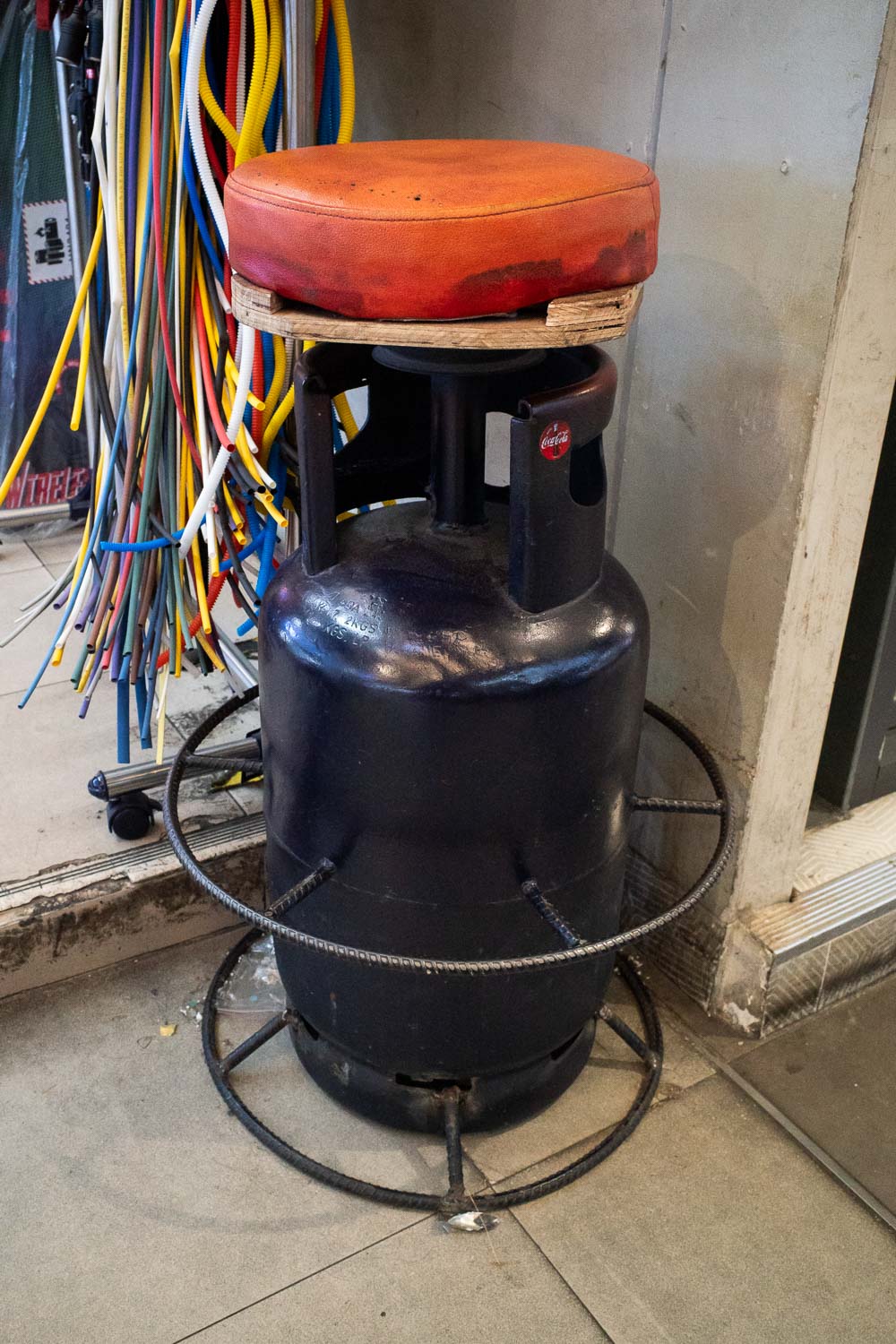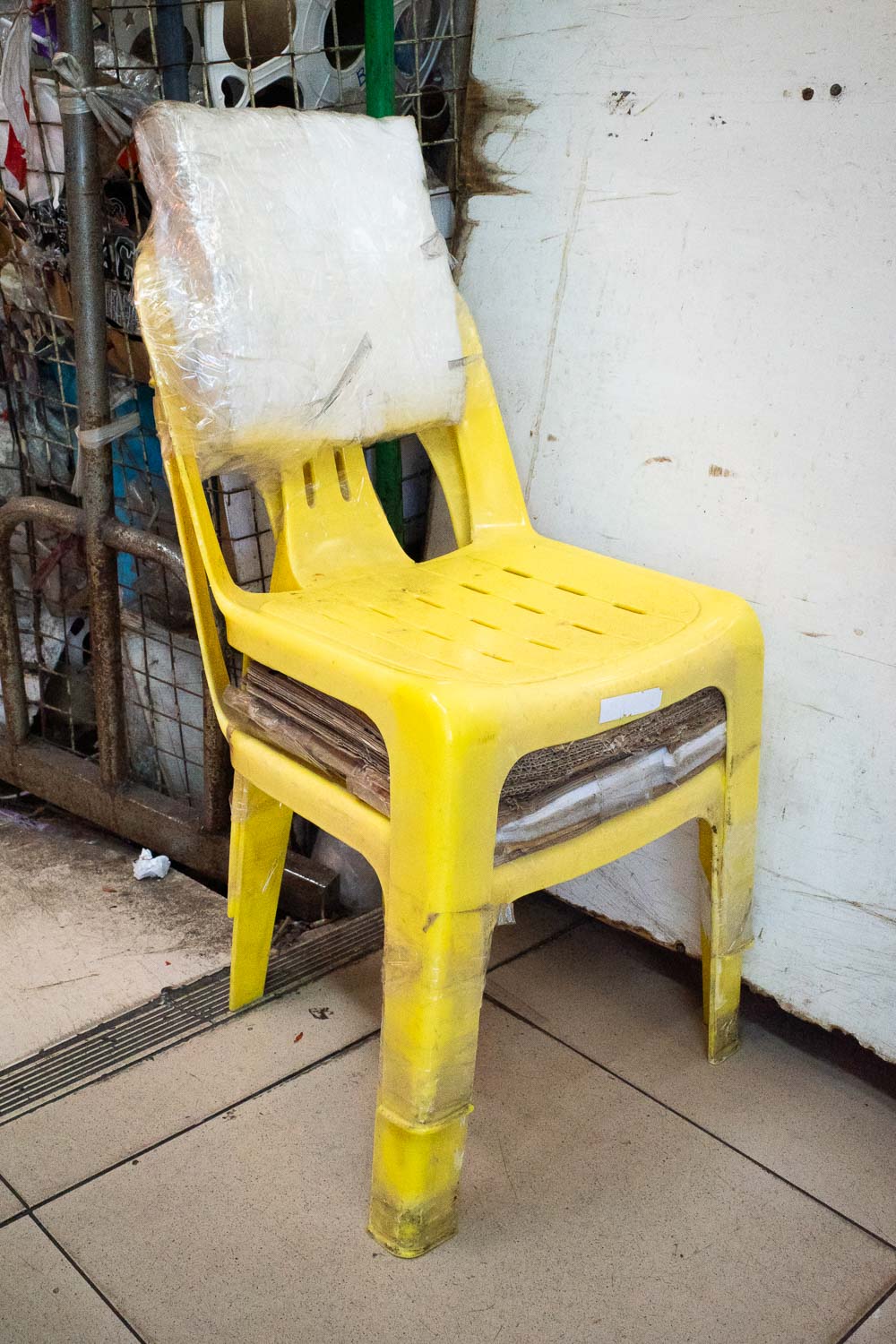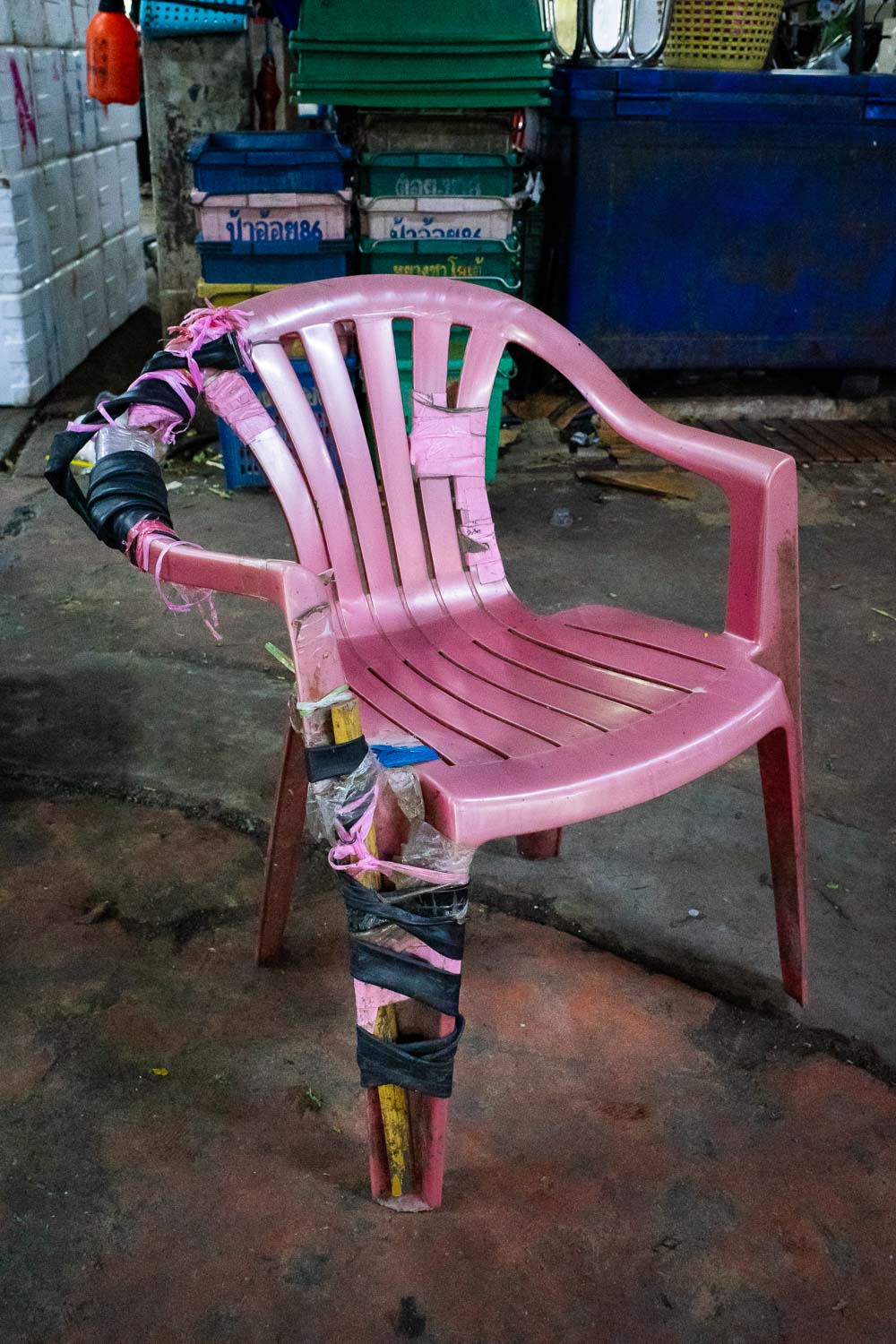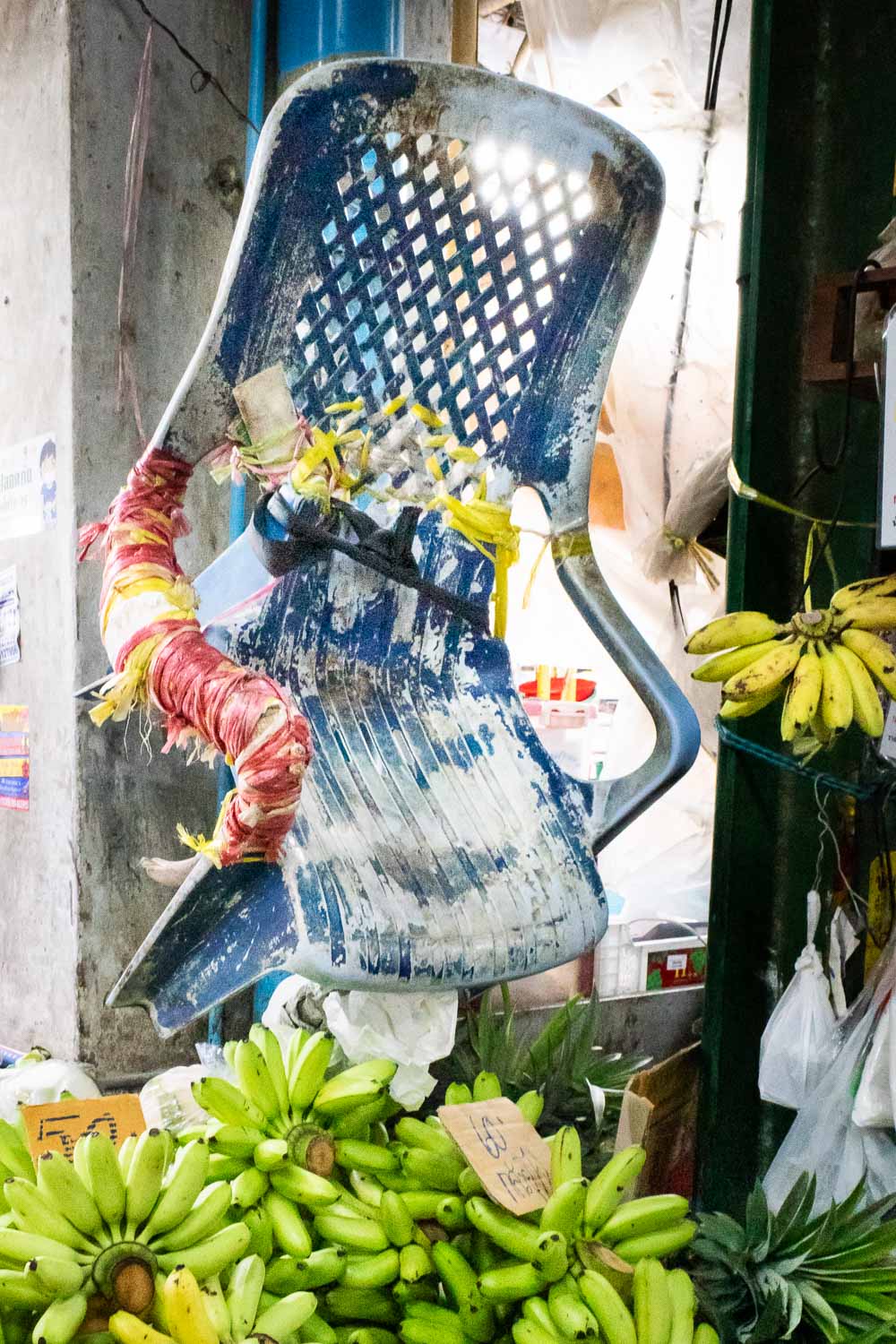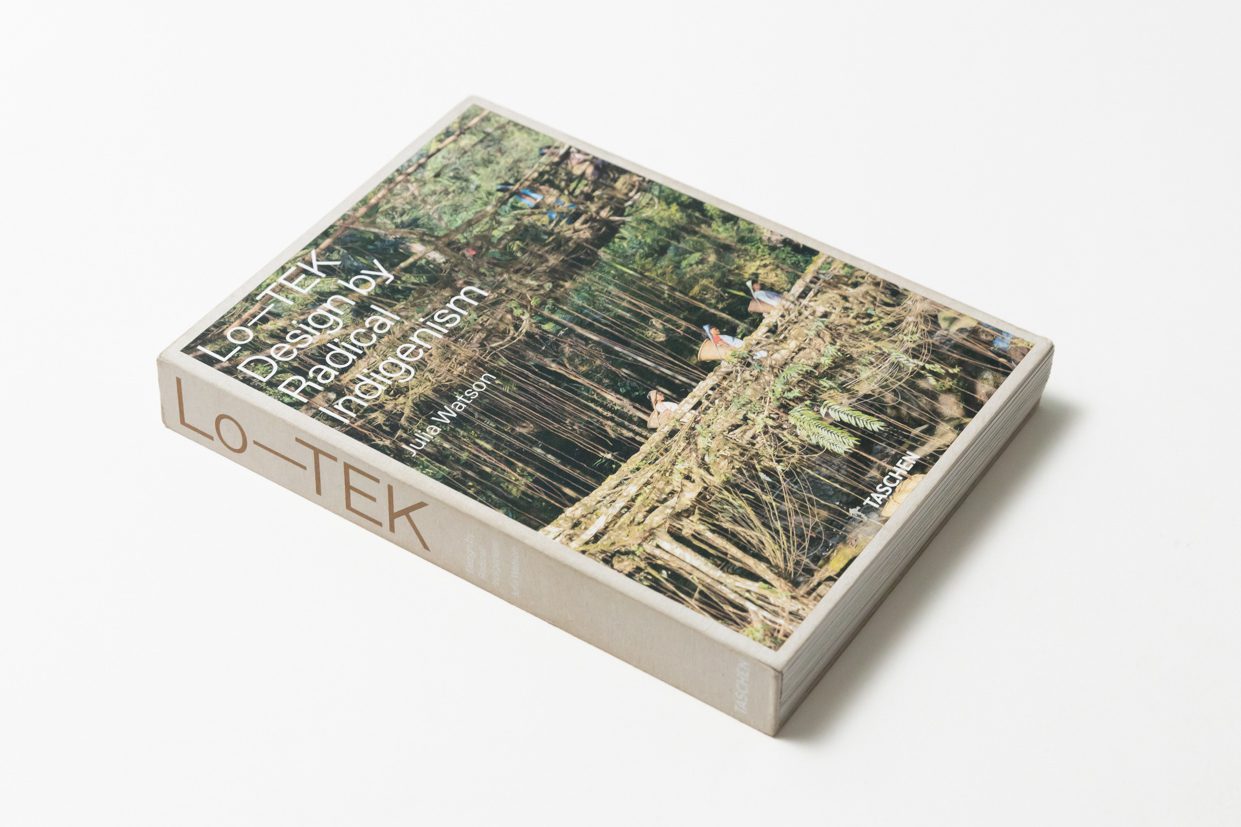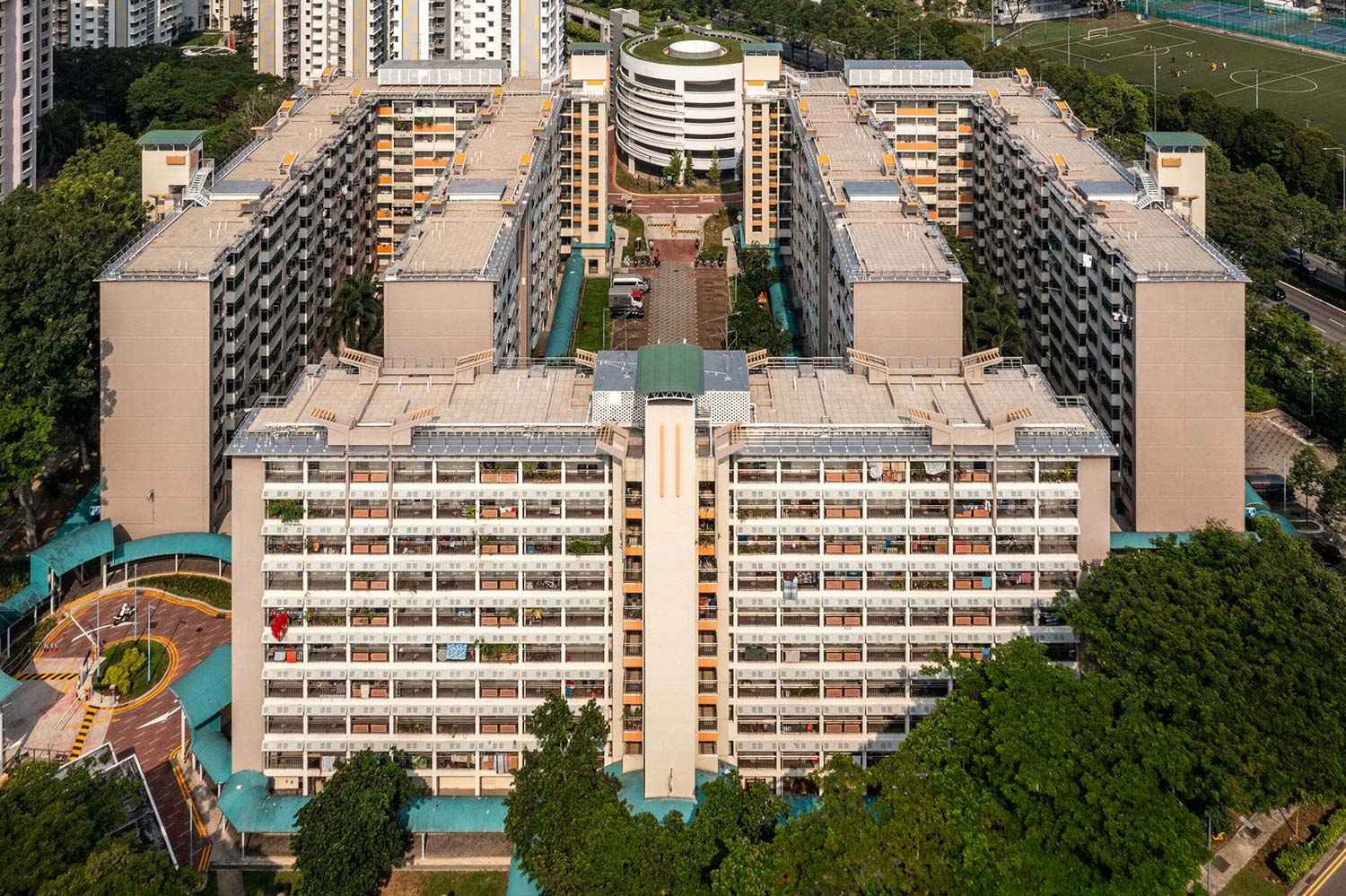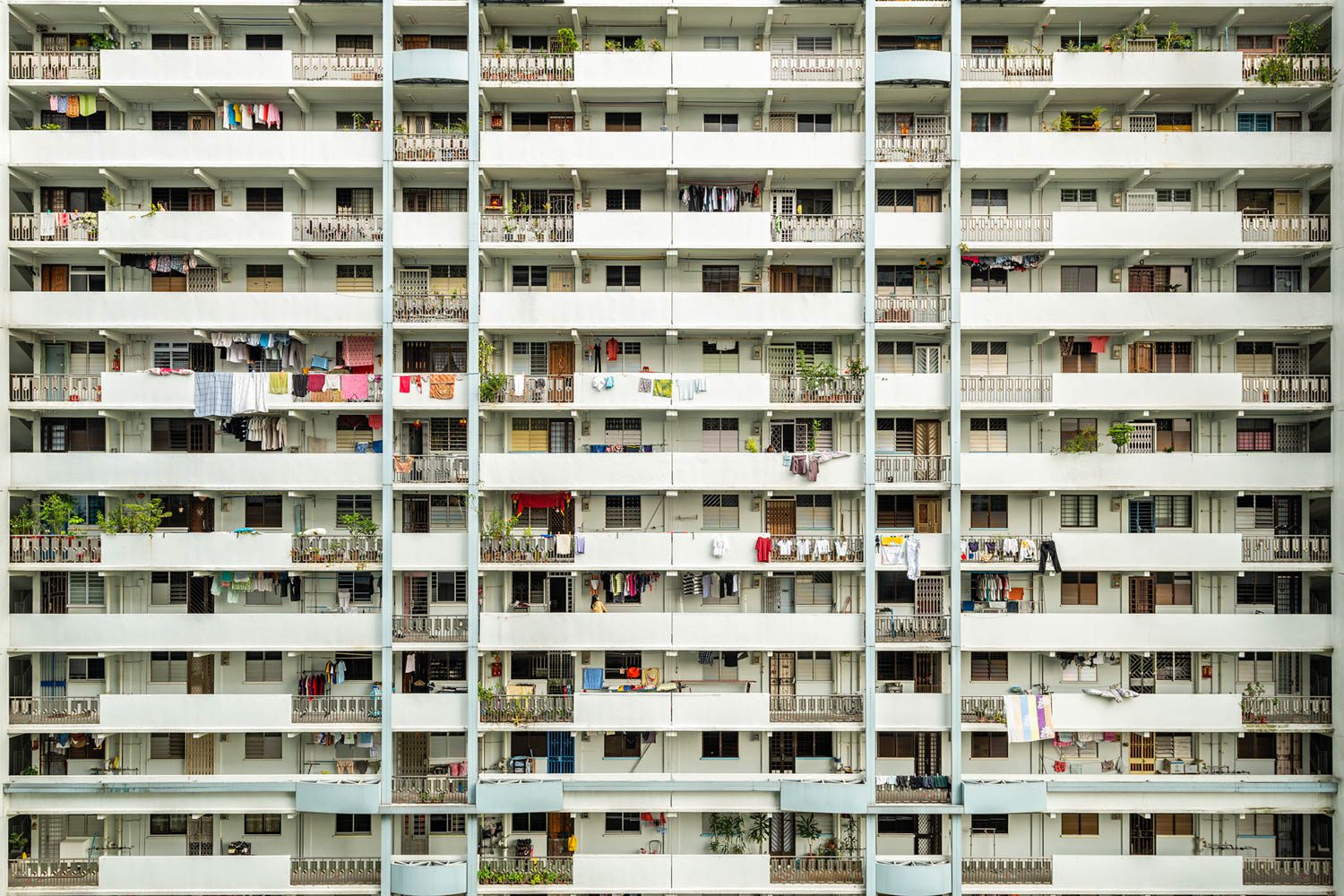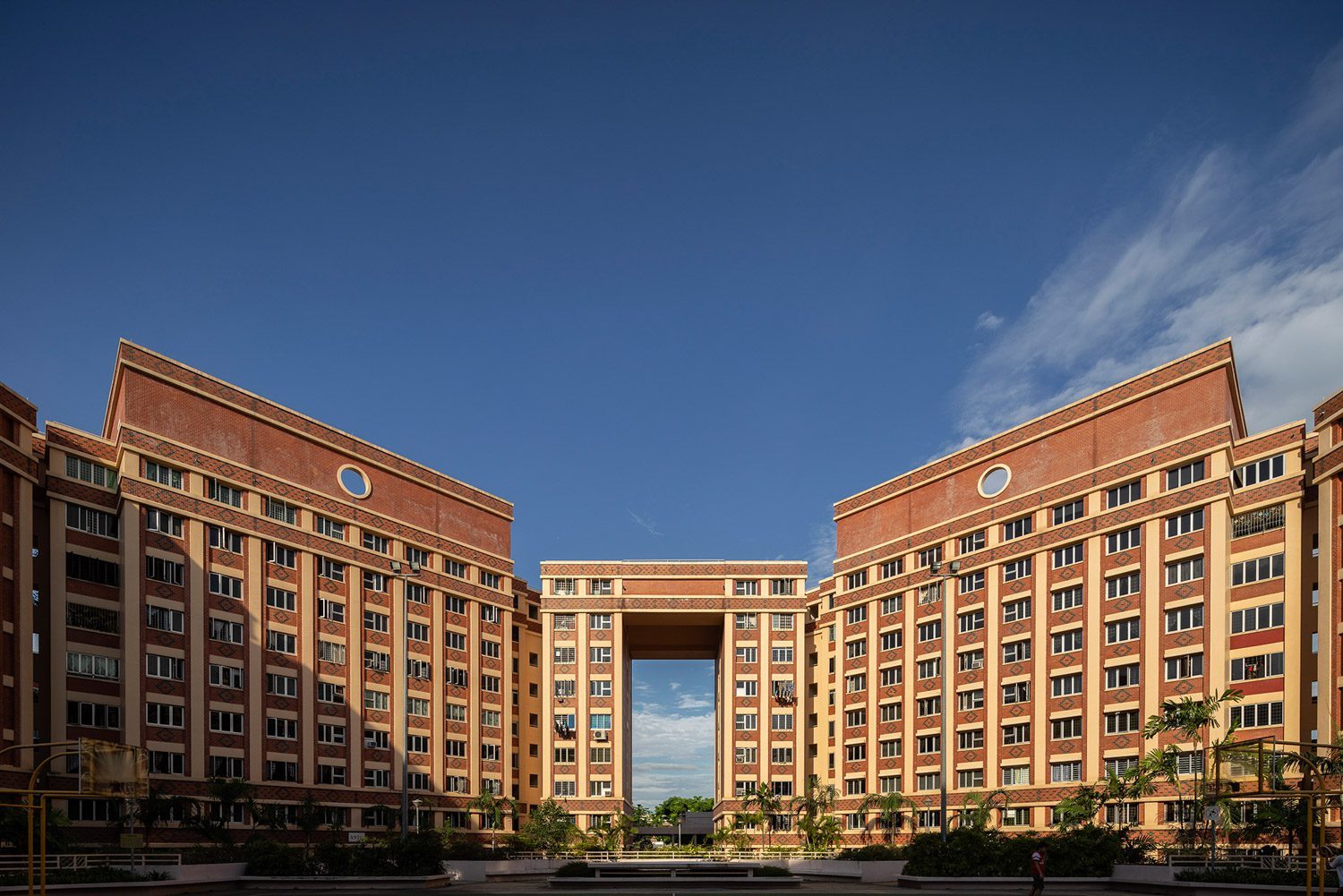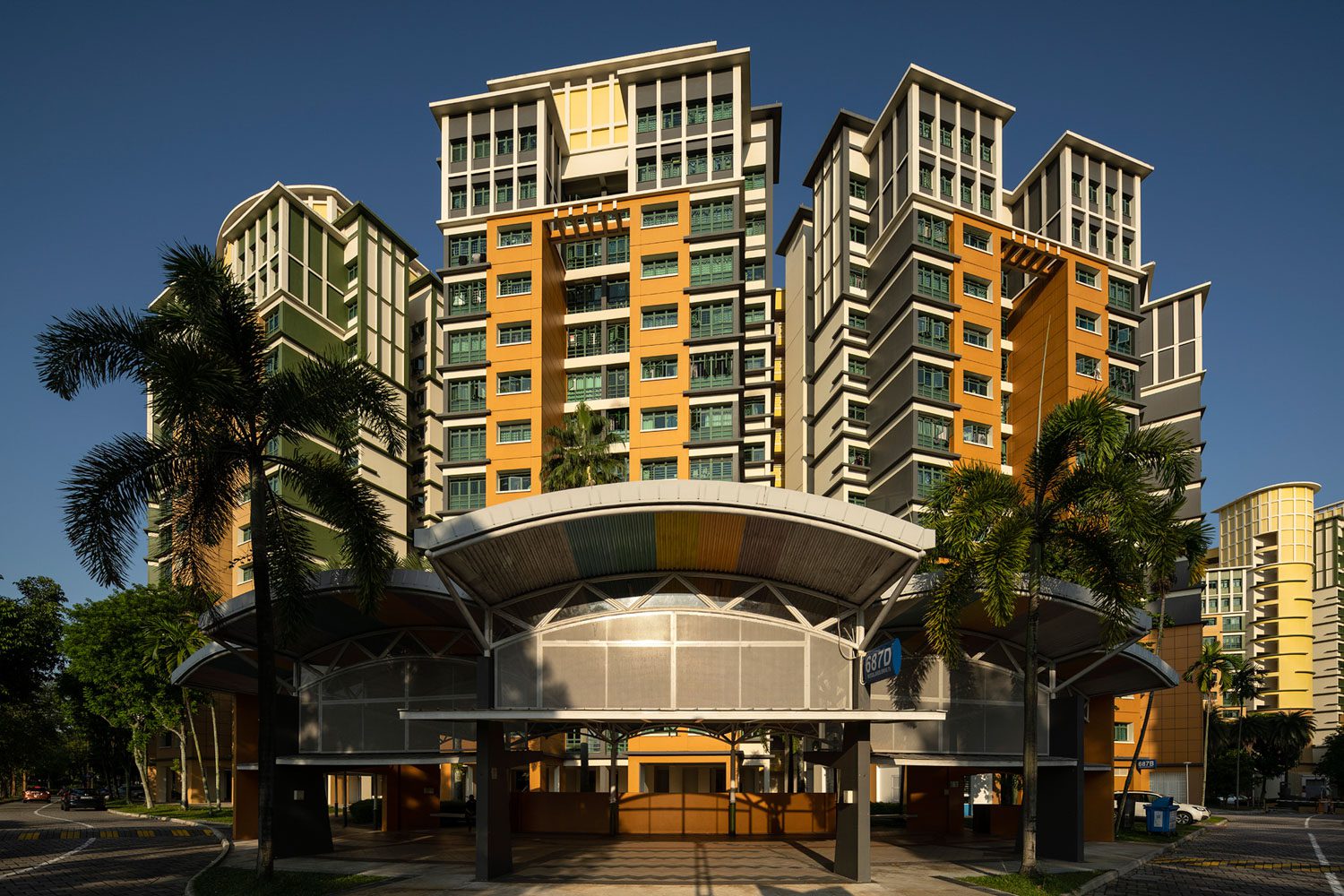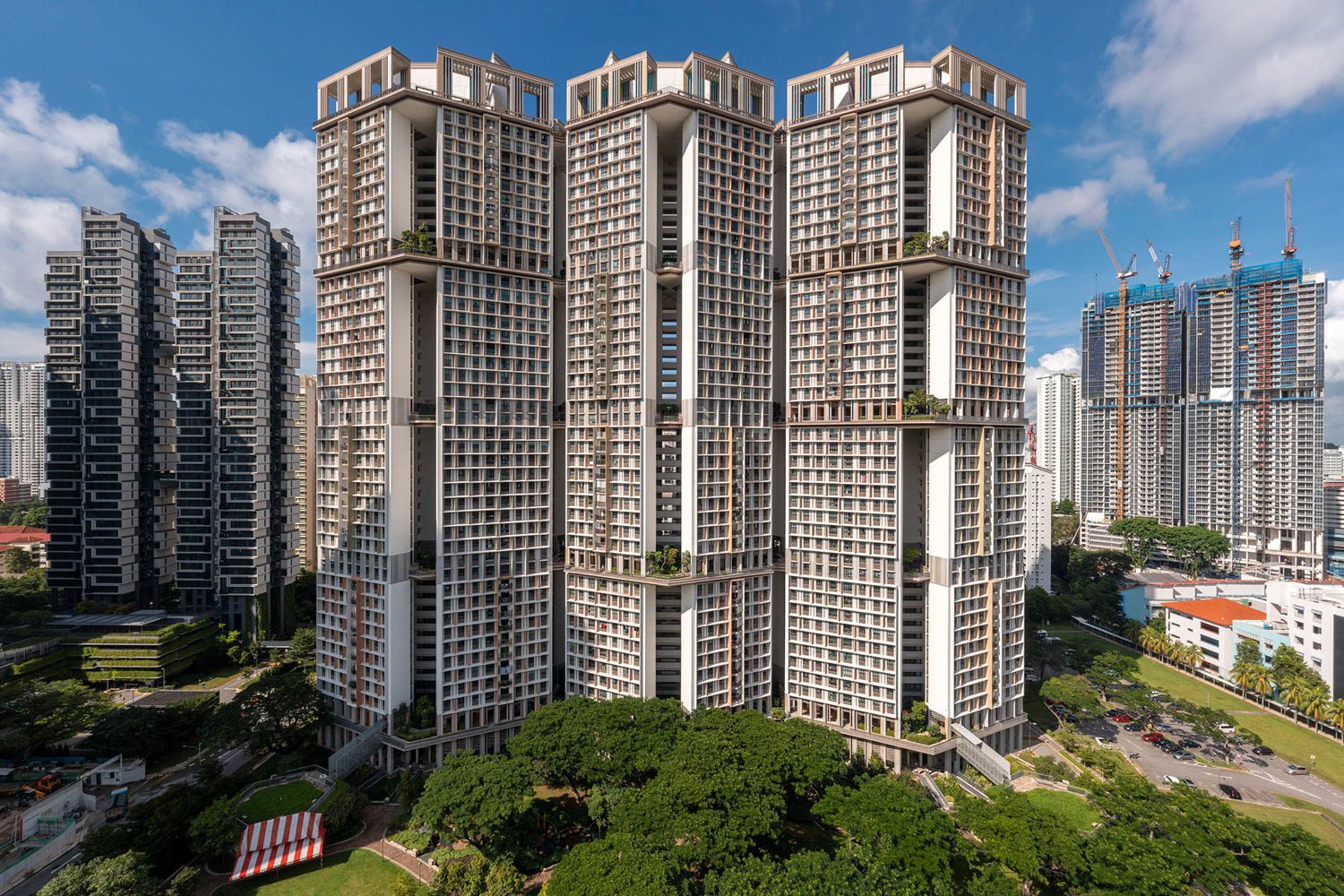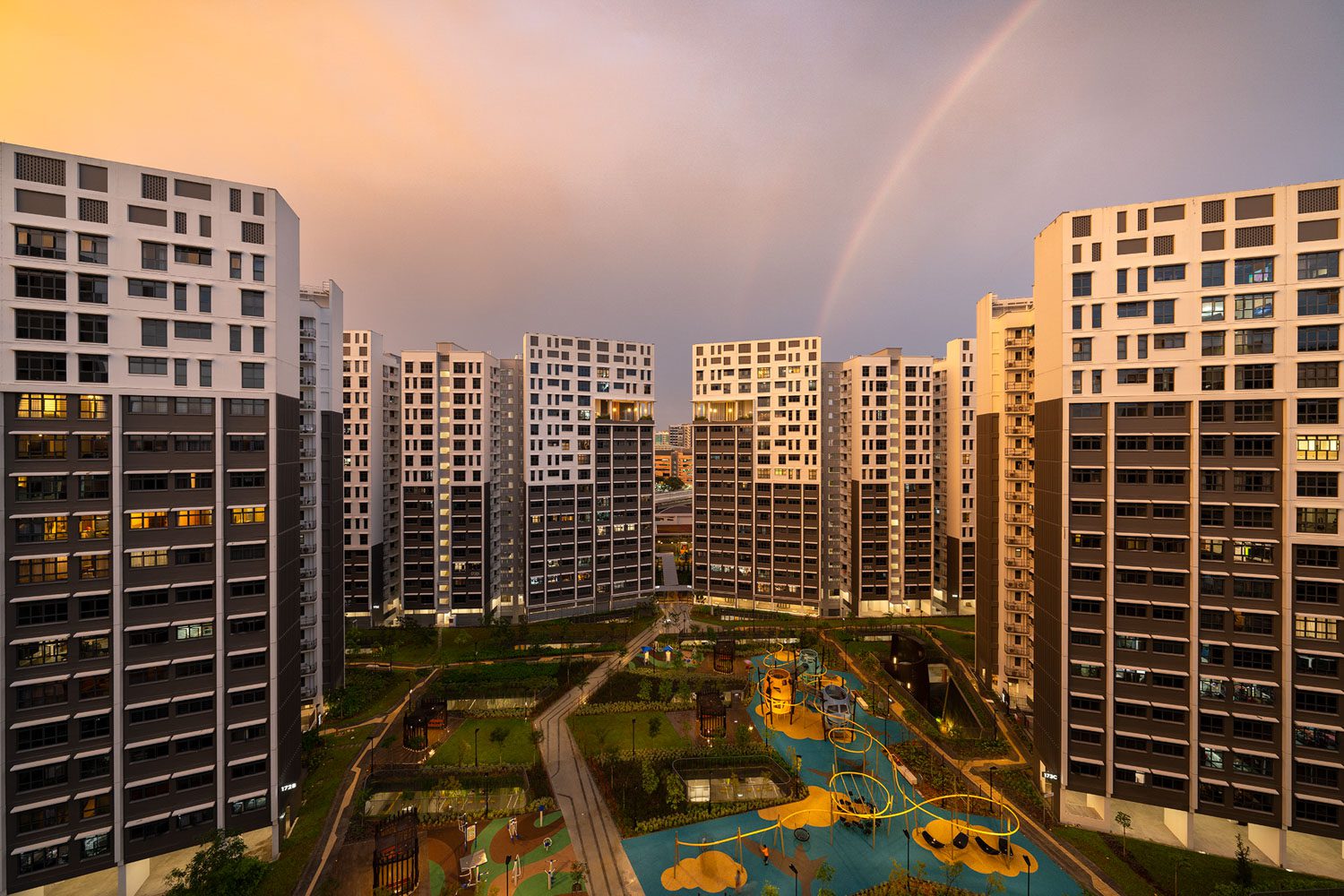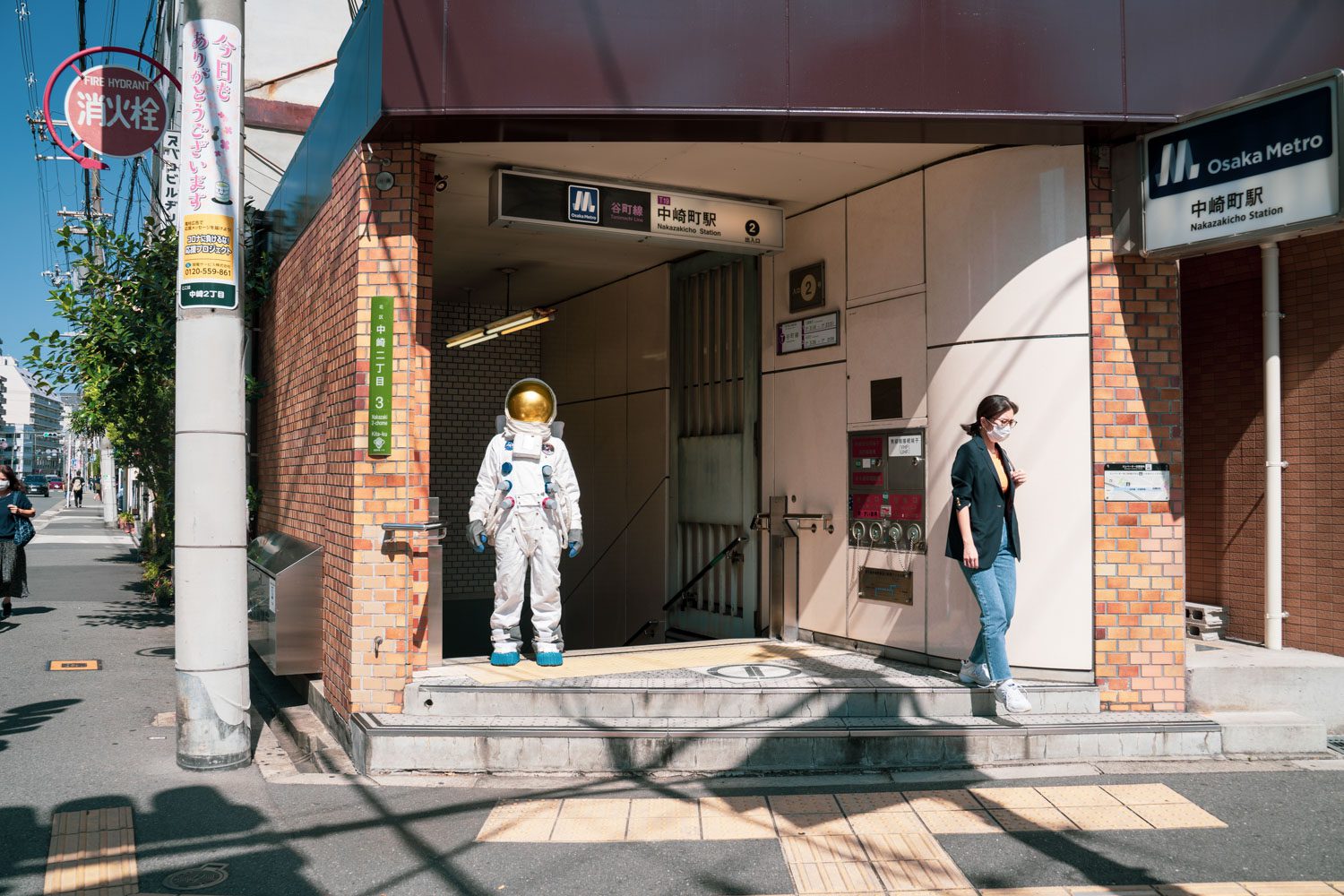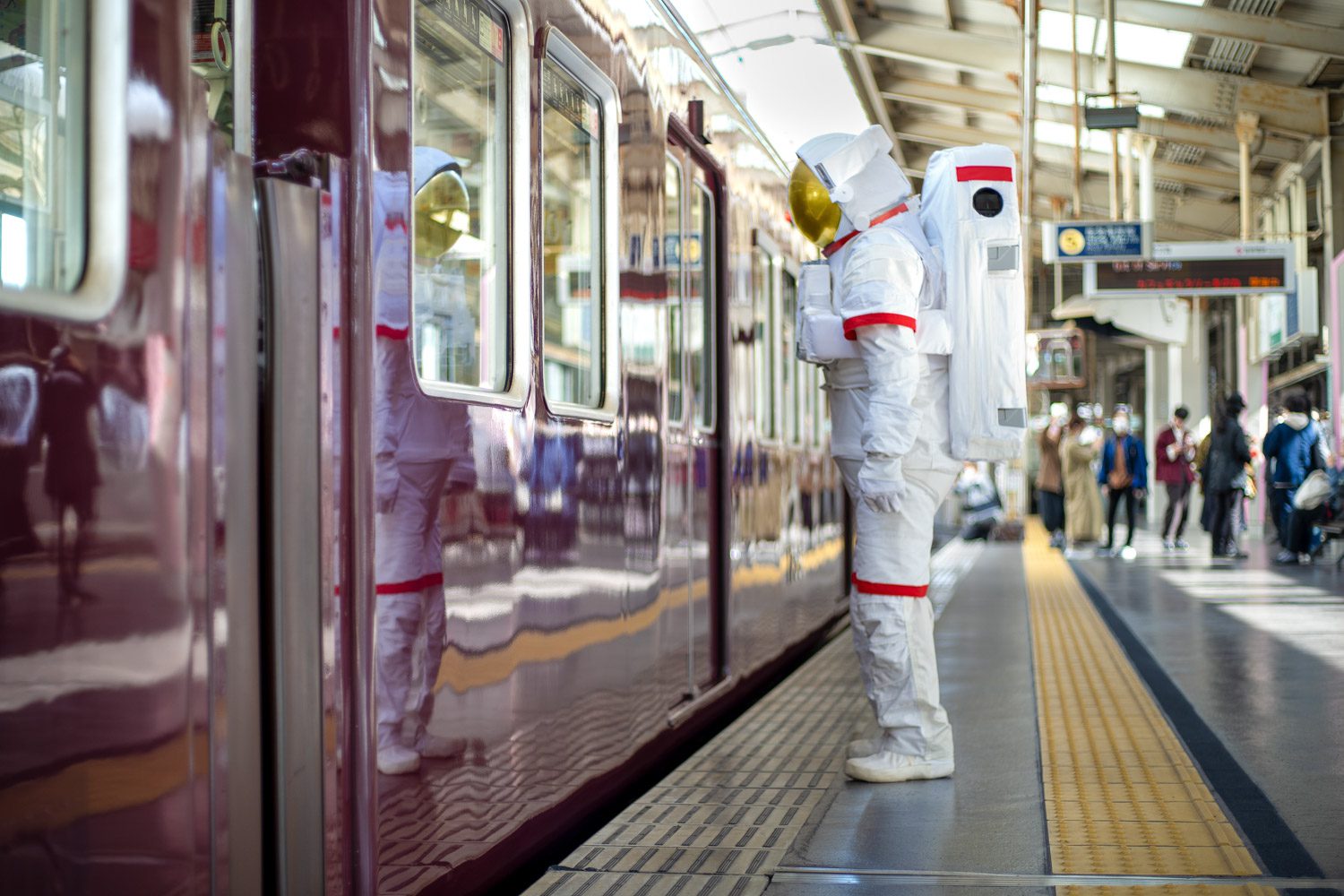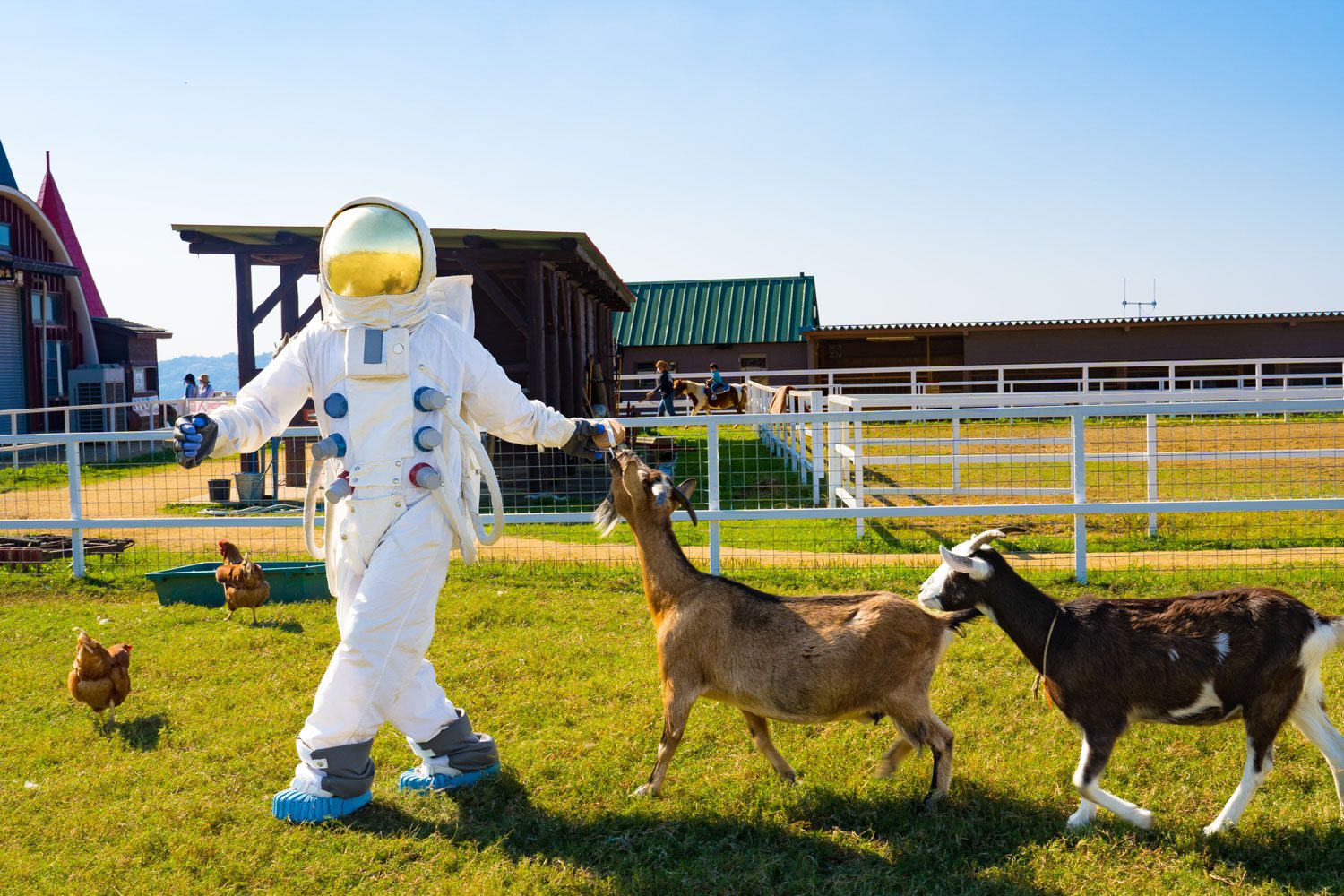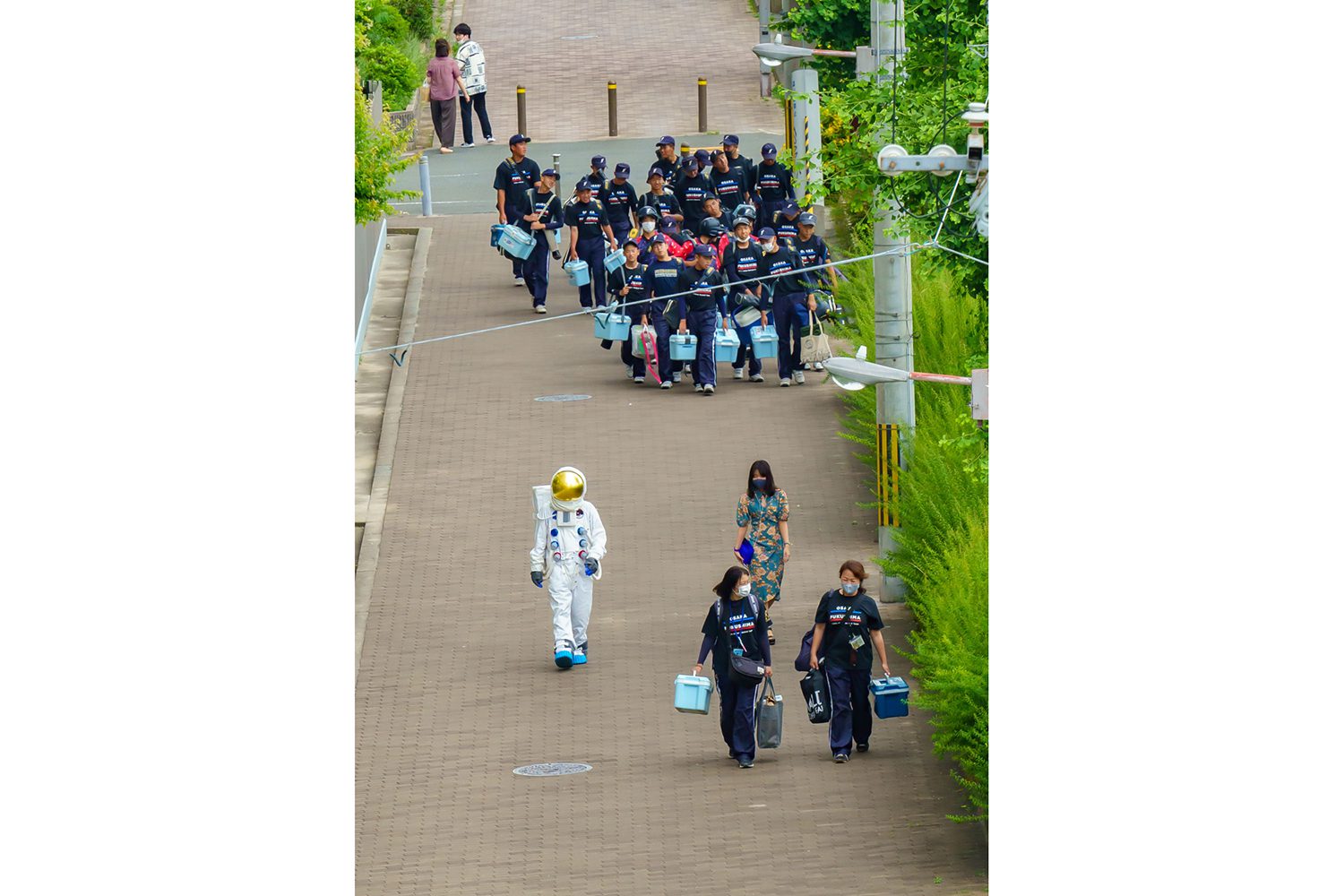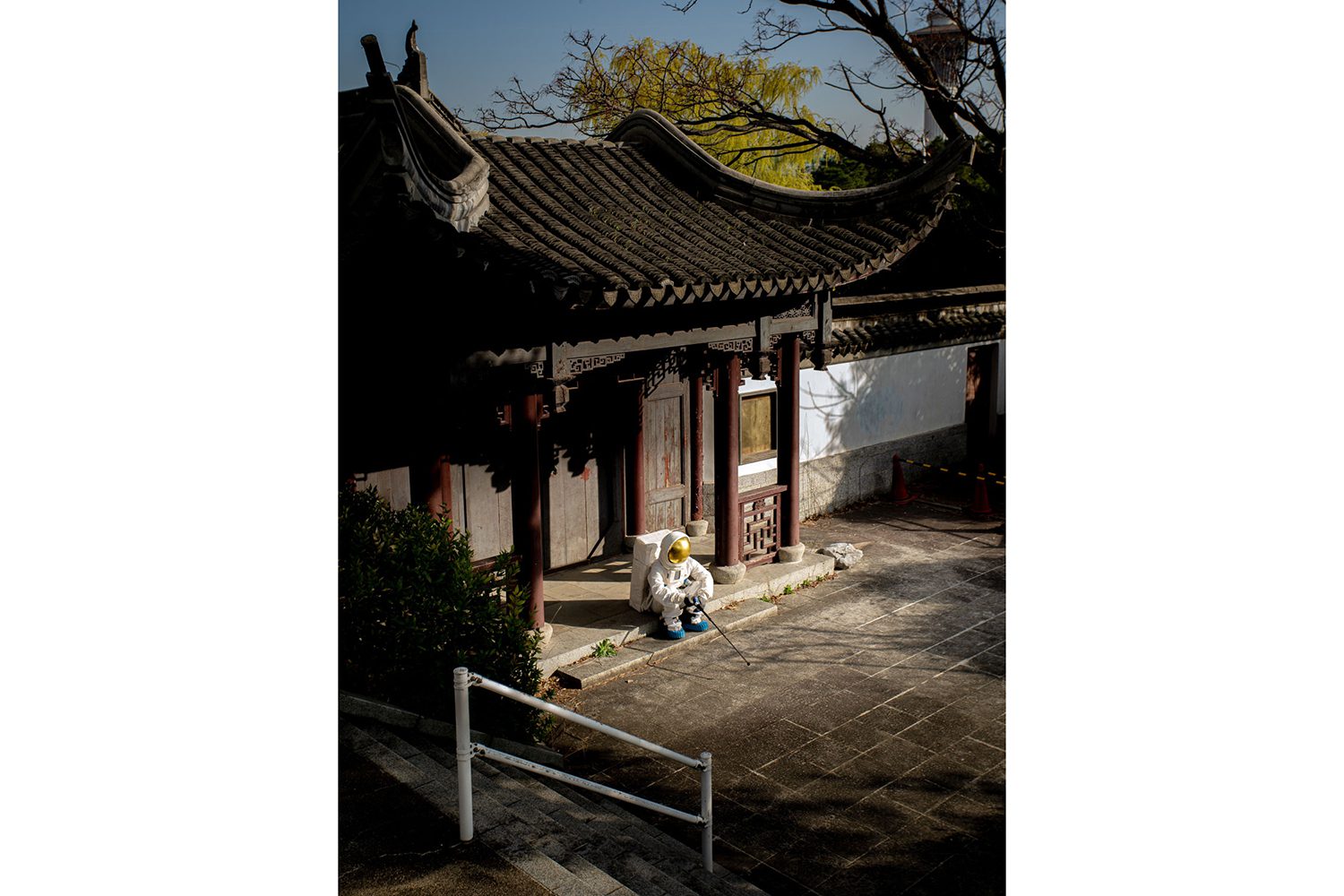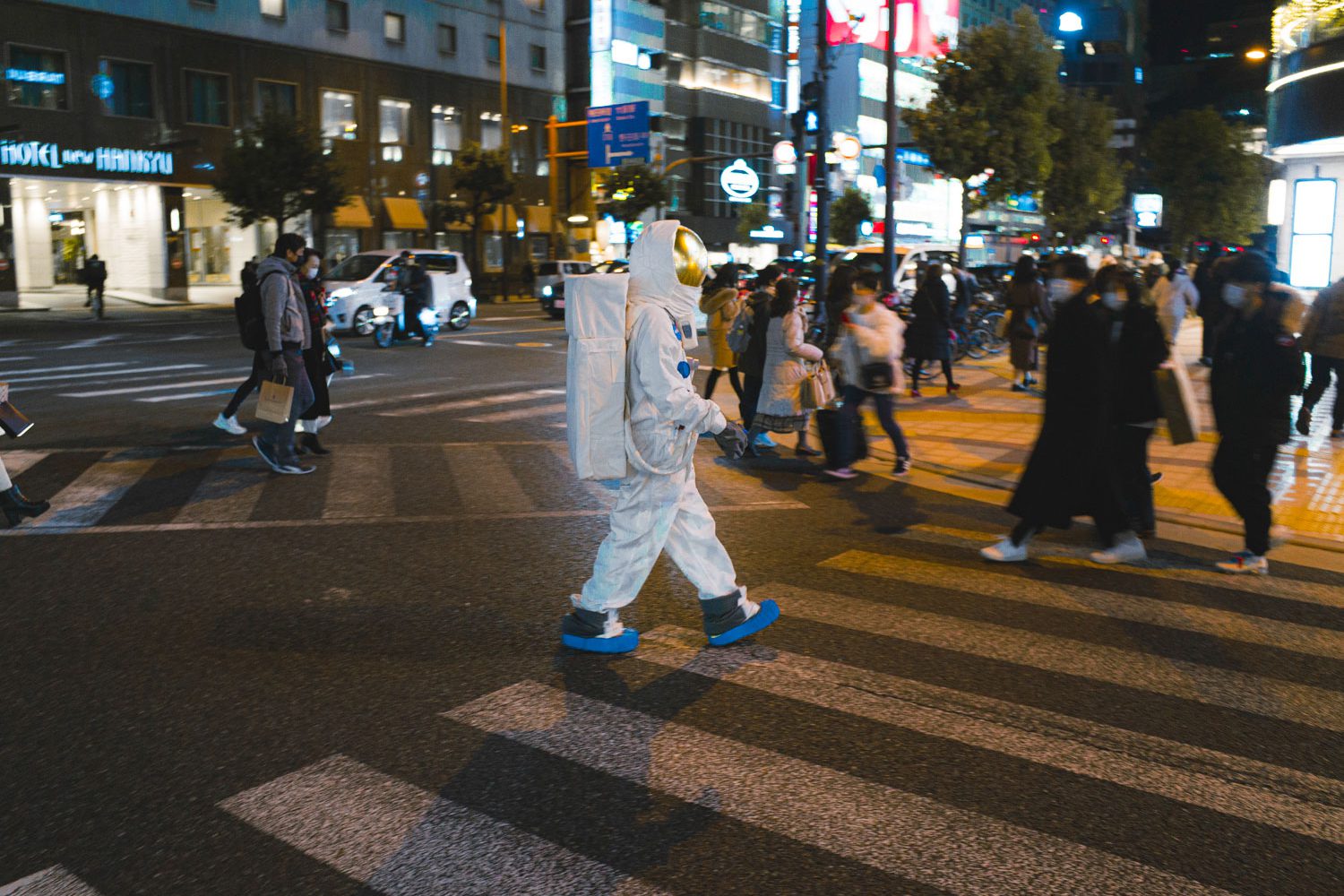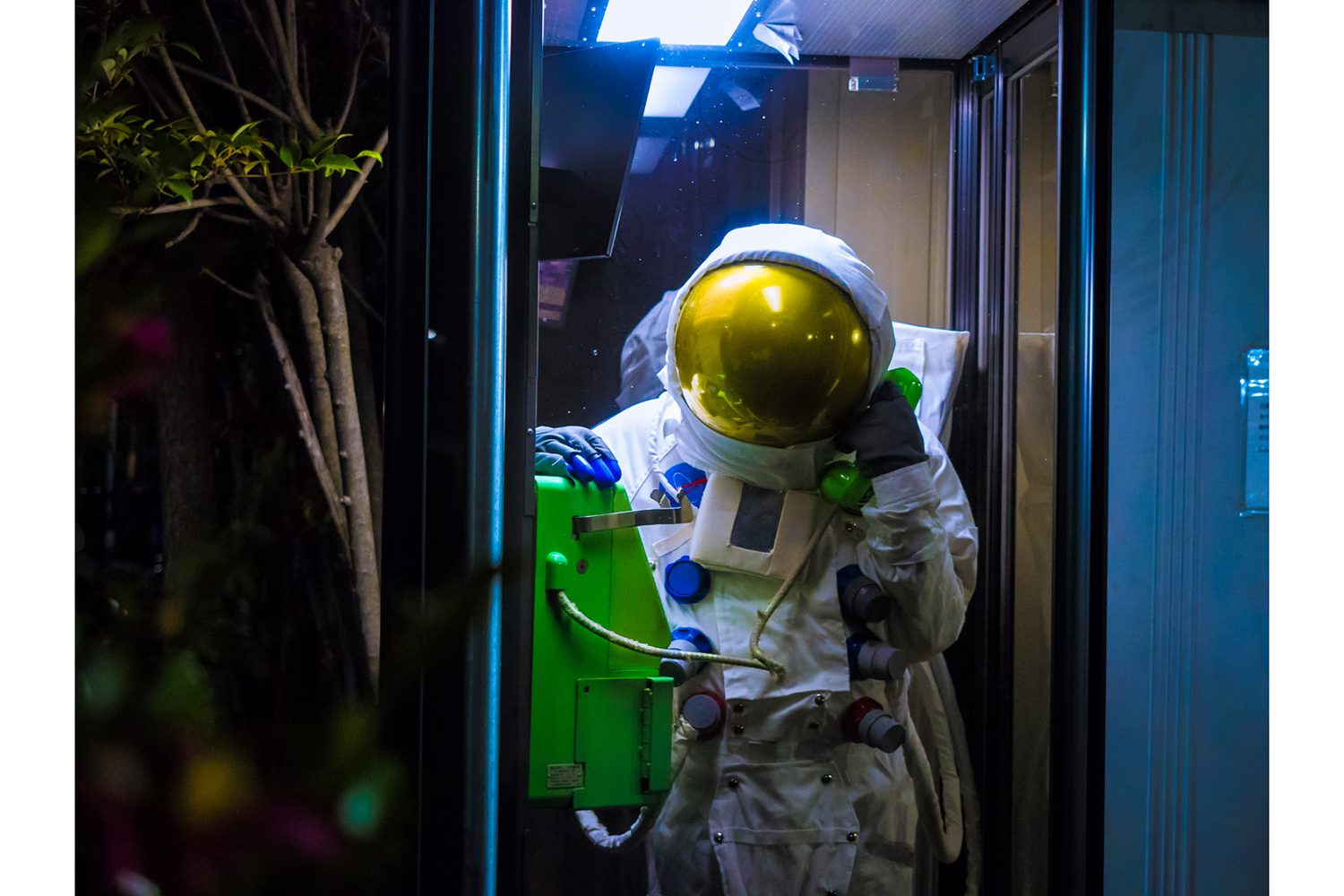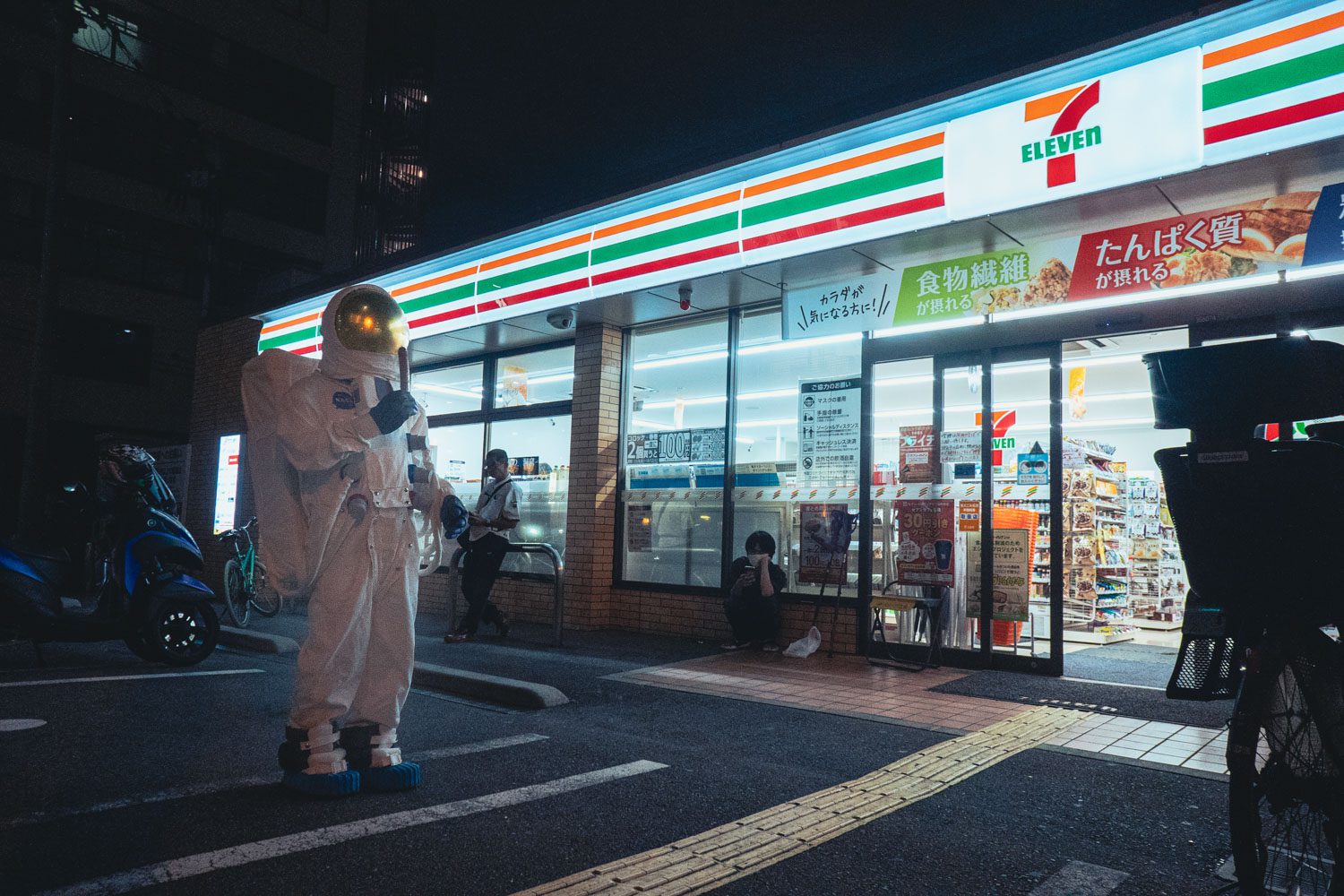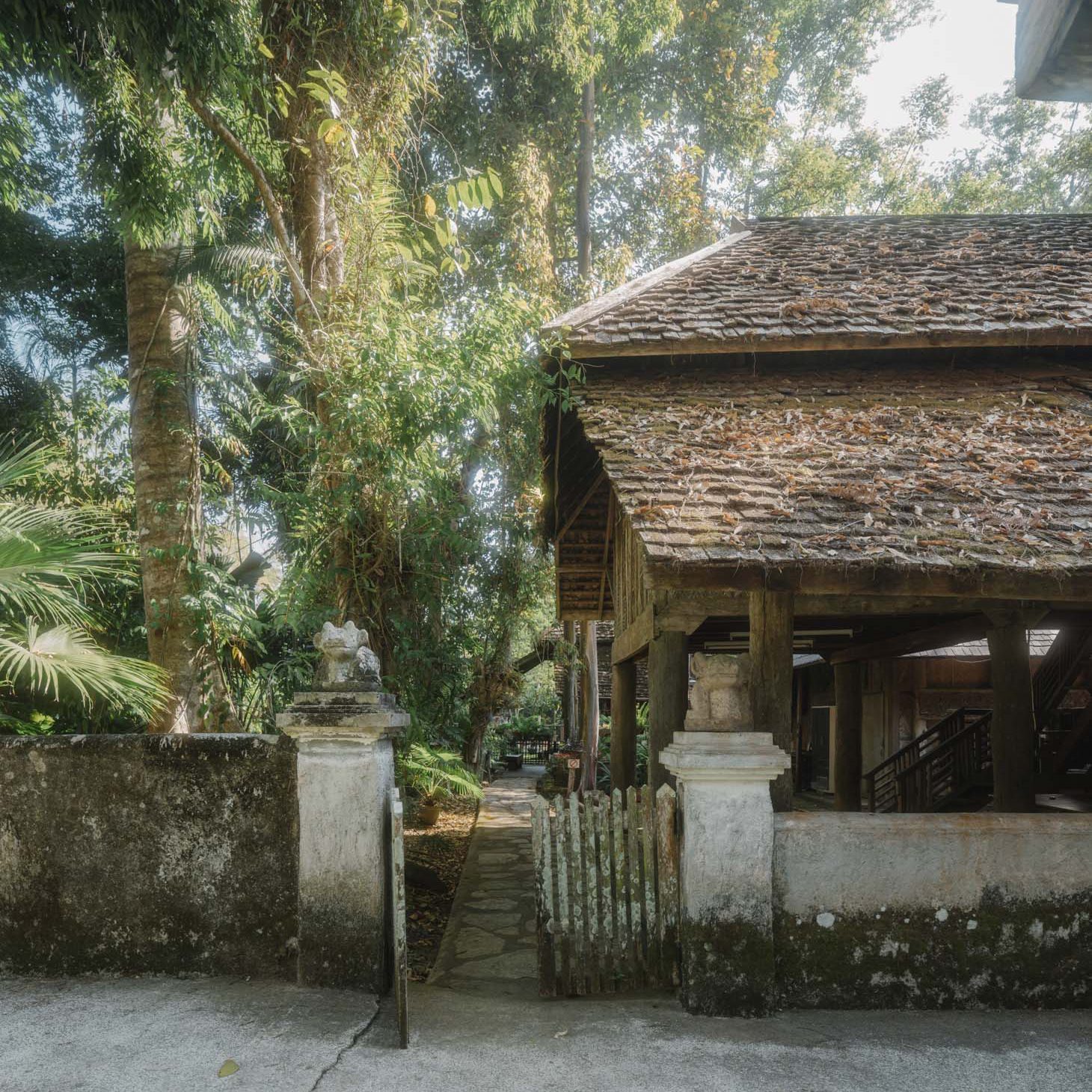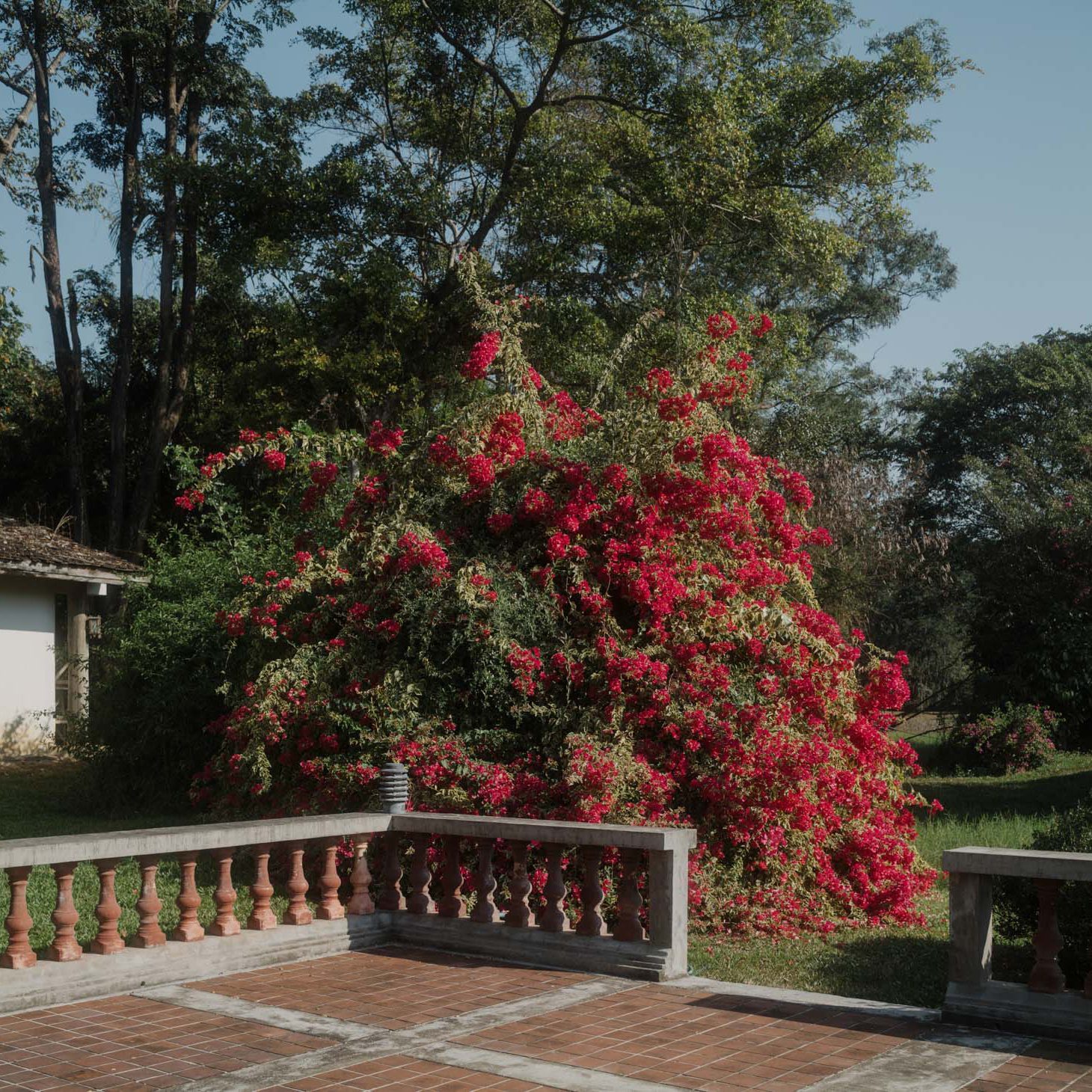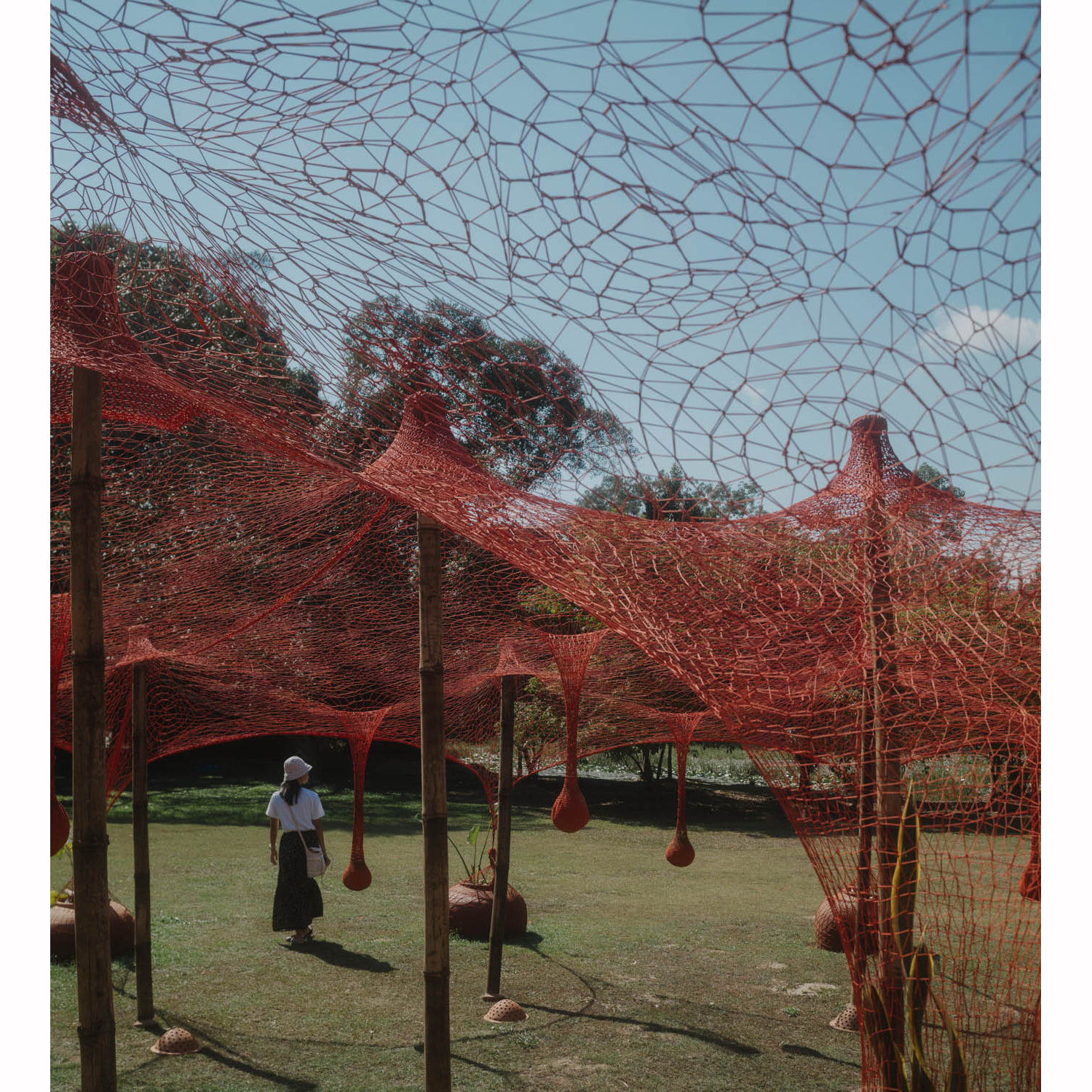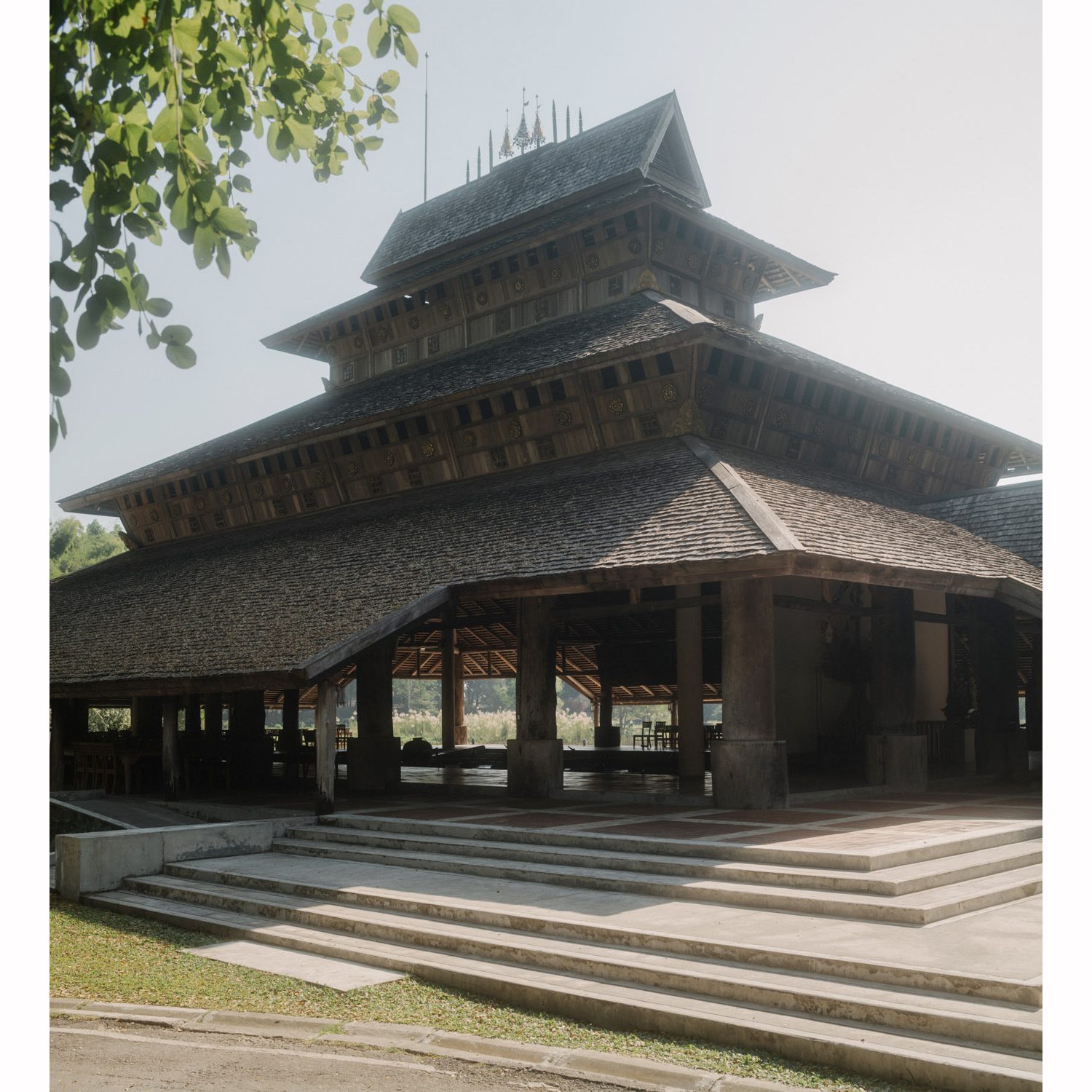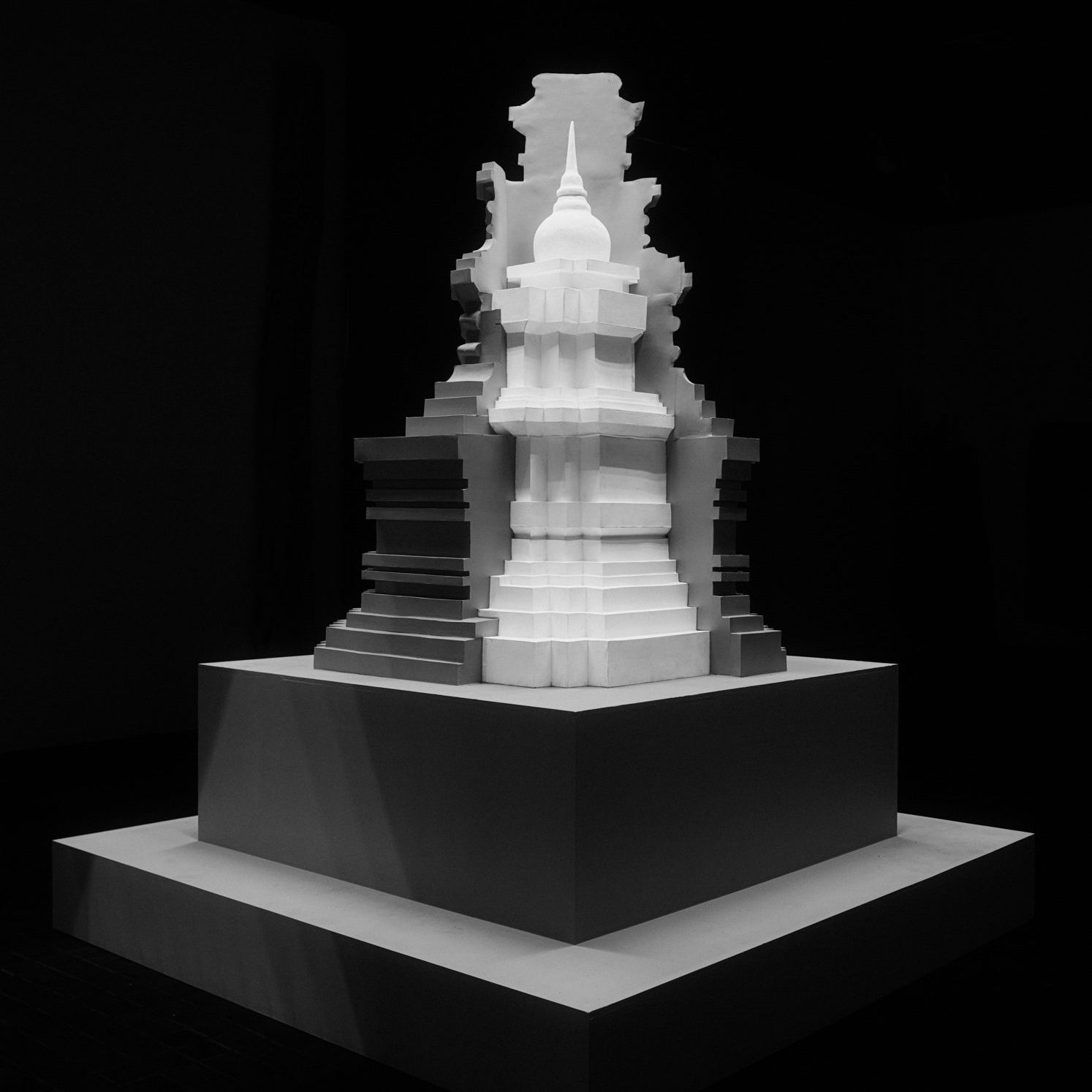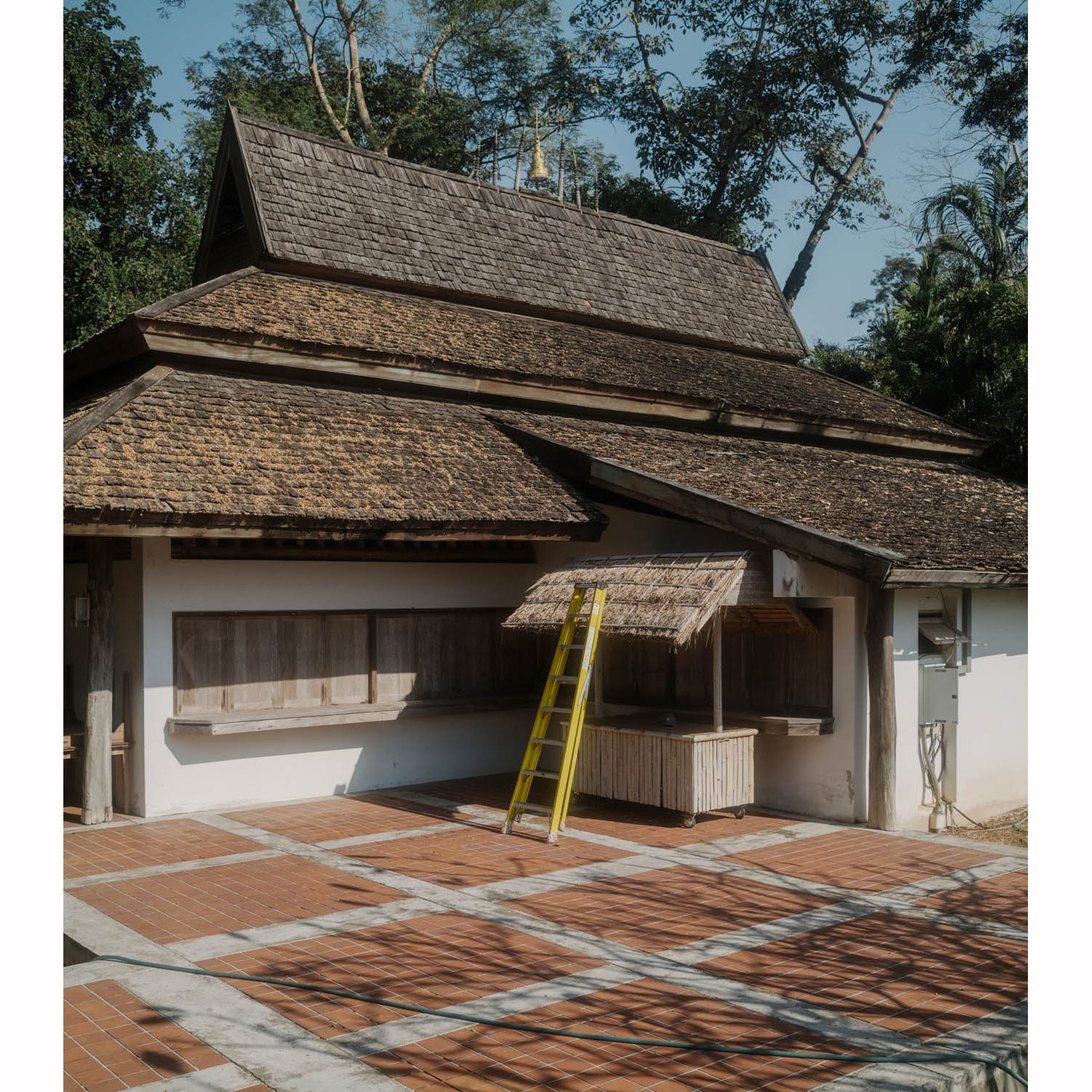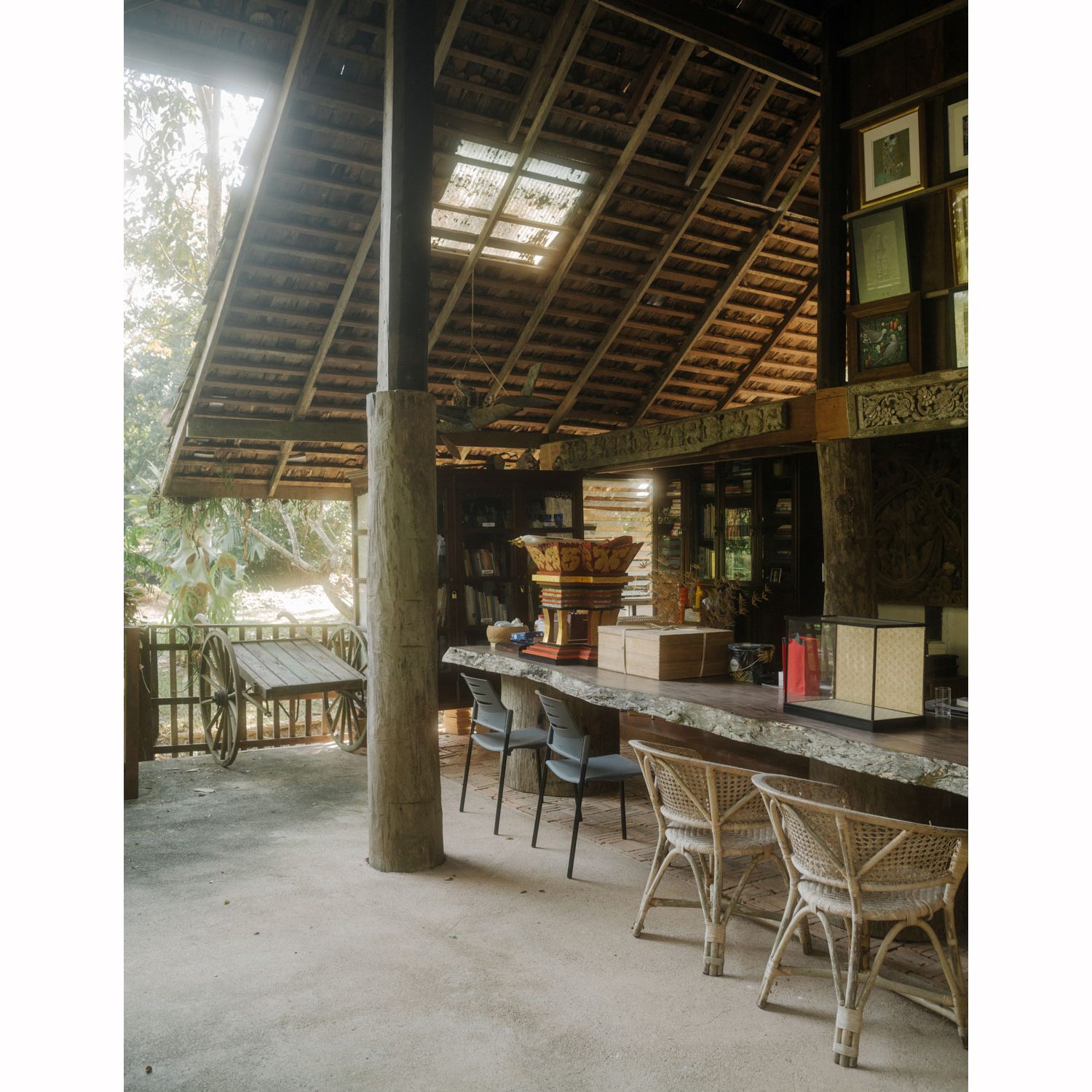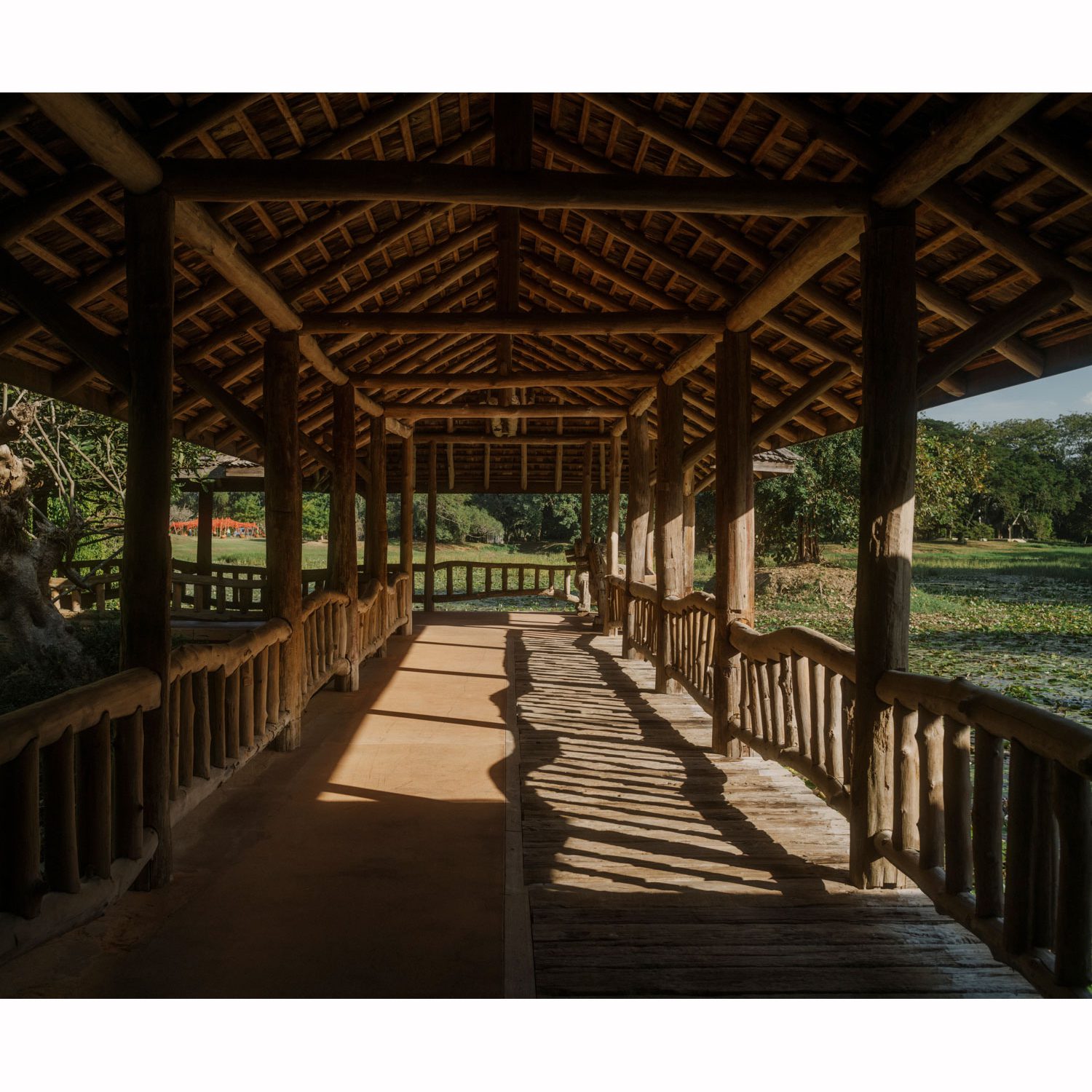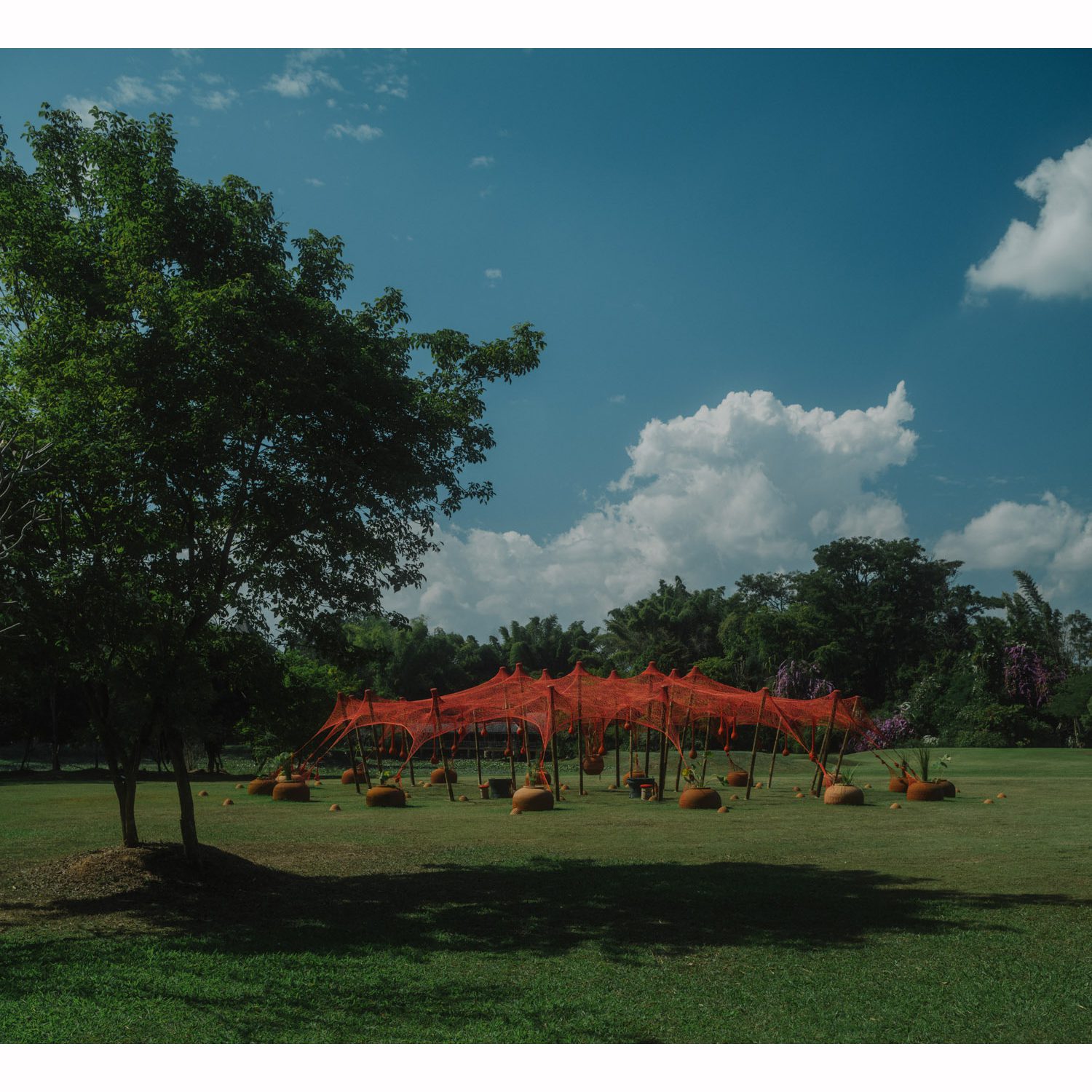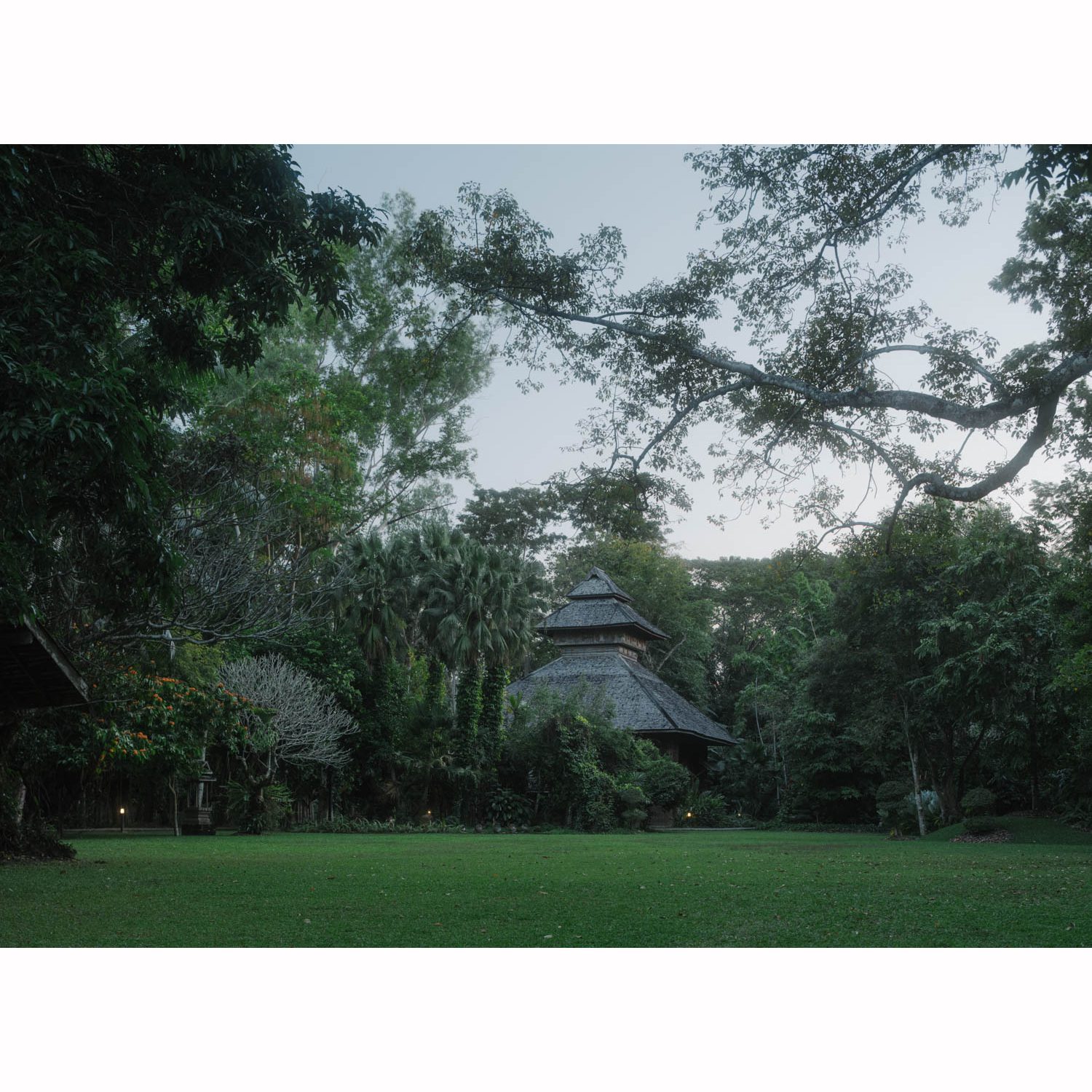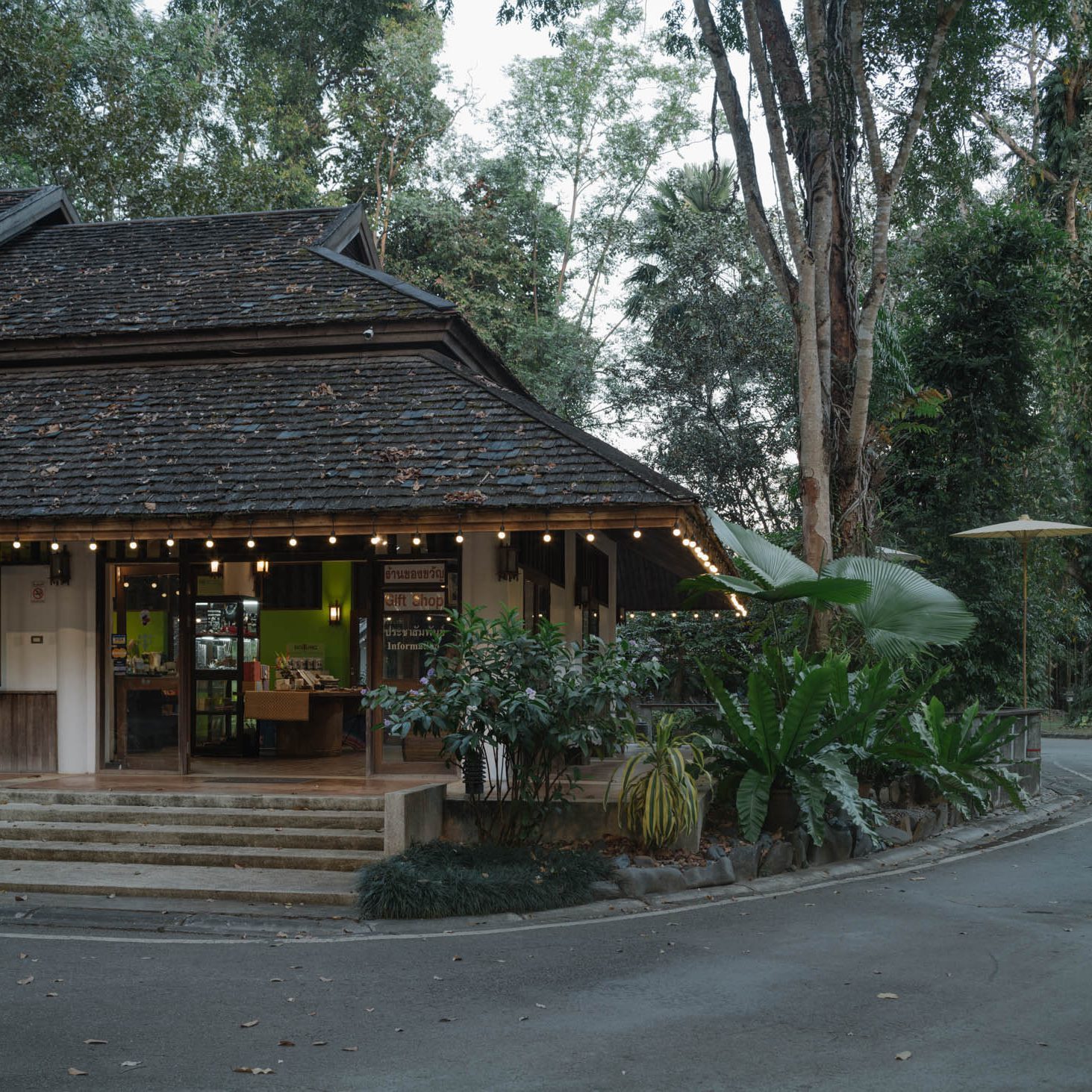All posts by Ketsiree Wongwan
PHOTO ESSAY : SPECTRUM OF SOLITUDE: A TAPESTRY OF URBAN LIFE
TEXT & PHOTO: CHEVAN LIKITBANNAKON
(For Thai, press here)
In “Spectrum of Solitude,” a captivating series of photographs, the lens delves into the intricate dynamics of urban existence, capturing moments of connection, introspection, and cultural immersion amidst the backdrop of parks, museums, and bustling streets. Each image is a brushstroke in the larger canvas of urban life, revealing the nuanced interplay between solitude and companionship, culture and art.
The series opens with scenes of people basking in the warmth of companionship, laughing, and sharing stories in the verdant embrace of city parks or cozy cafes. Friends and lovers alike find solace in each other’s company. Their joy is palpable against the backdrop of urban landscapes. Yet, interspersed among these moments of camaraderie are glimpses of solitary figures lost in thought amidst the hustle and bustle of city life. These solitary moments offer a poignant counterpoint to the vibrant energy of communal gatherings, inviting viewers to contemplate the beauty of introspection and self-discovery.
As the series unfolds, cultural immersion takes center stage, with photographs capturing the diverse tapestry of traditions and expressions that define urban landscapes. From the hushed halls of museums, where art and history intertwine, to the vibrant streets pulsating with the rhythms of different cultures, each image is a testament to the richness of human experience found within the city’s embrace.
“Spectrum of Solitude” is more than just a collection of photographs; it is a visual symphony that celebrates the multifaceted nature of urban life. Through the lens of street photography, viewers are invited to explore the delicate balance between connection and solitude, culture and art, discovering beauty in the everyday moments that shape our urban experiences.
_____________
With a background in filmmaking, Chevan Likitbannakon is a Thai-Egyptian passionate visual storyteller, particularly through the visual arts – painting, photography, music videos, and filmmaking. There are fleeting moments where I glimpse the essence of the subject(s) I capture. That is the story I tell. And I become part of that story by being behind the camera and documenting that particular moment. It could be a feeling, or a thought, or a look, that is revealed in the captured moment – one that was perhaps previously unseen.
PHOTO ESSAY : THE ARCHITECTURE OF DEMOLITION
TEXT & PHOTO: AKAI CHEW
(For Thai, press here)
Singapore is a city in constant change. Buildings are built and redeveloped at a fast pace. A 30-year-old building is seen as ripe for redevelopment. In Singapore, demolition and construction are everywhere. Like a magician throwing a piece of cloth upwards and vanishing when the cloth drops, when the scaffold drops, the building is no longer there. Since 2015, the pace of demolition has escalated to outrageous proportions. Currently, four of the top 10 tallest redeveloped buildings in the world are in Singapore.
In the 1960s, Singapore used urban development to catalyze the new country’s economy. New skyscrapers signaled a new era. Today, some of these buildings have been demolished.
Demolition and construction in Singapore are almost as much architecture as an actual building. In the past few decades, redevelopment and loss of the natural and built environment have been seen and accepted with apathy and as a necessity to Singapore’s economic growth and urbanization; it was progressing as Singapore rose to become a better city. In Singapore, the contemporary is the history of 10 years later.
As our post-independence era architecture gets slowly erased and replaced, it opens further questions on the outrageous.
I thought about vintage photographs showing Singapore in the 19th century. We look to the past in fascination, and we think to ourselves how much the city has changed since then. Maybe in Singapore, this past might just be 10 or 20 years ago.
_____________
Akai Chew is a Singapore-based artist whose background in architecture, urban planning, and architectural heritage informs his contemporary art practice. As an artist, he works primarily with photography and site-specific installations. Akai studied architecture and built environments at the University of Tasmania in Australia. He has exhibited extensively in Singapore, Bandung, New Delhi, Hobart, and Launceston.
PHOTO ESSAY : DIY THAI CHAIRS
TEXT & PHOTO: BARRY MACDONALD
(For Thai, press here)
I am a photographer and I have been documenting the DIY-repaired chairs of Thailand’s streets. When something is broken it is not thrown away, but mended with found materials and given a new lease of life. Where some people would see a useless piece of furniture, the people who repair the chairs see possibilities and solutions. These chairs can be found everywhere from motorcycle taxi stands to markets, public seating is limited and making your own place to rest is important.
The designers and engineers are normal people who use their ingenuity and the best of up-cycling and recycling philosophies to make their creations. A lot of the time the design is purely practical, but sometimes it creates a different kind of beauty when assembled from lots of different materials. Techniques such as carpentry, weaving, tying, welding, glueing, cable tying, carving, taping, bungee cording etc are all employed. Sometimes the objects around can become part of the support, and the street and the chair merge, like the chair that sits inside the tree branch to make an armchair.
Cheap products that break quickly encourage waste and more consumerism, the art of repairing anything we own is becoming lost as companies employ planned obsolescence. These chairs symbolise urban design, working with the restrictions of damage and limited materials, to create seating that makes working on the street possible. These kinds of skillets are important as global resources become limited, the mindset to repair and not replace will be just as important.
I think the resourcefulness and flexibility of these designers is an important part of the fabric of Thailand, and should be considered and embraced when planning the future of public spaces.
_____________
Barry Macdonald was born in London, UK. His dad used to take photos with a 35mm film camera as a hobby and taught him how to use it when he was quite young. He had his own film camera by the time he was 15. The camera opened up a way to interact with the world that made sense to him. Composing a frame and timing the moment brings satisfaction when everything falls into place. His camera has allowed him to travel and meet a lot of people, and he is always grateful to it for changing his life and helping him make sense of the world.
A NEW CAVE
A SOLO EXHIBITION BY TANATCHAI BANDASAK WHO IS INTERESTED IN THE DIVERSE INTRINSIC CHARACTERISTICS OF OBJECTS UNDER THE THEME OF WATER, MOISTURE, AND THE SYNERGY BETWEEN TWO ELEMENTS MOVING TOGETHER IN HARMONY
Ai VS AI
AI WEIWEI HAS A PROJECT WITH 81 QUESTIONS FOR AI AND PEOPLE WORLDWIDE WHICH RAISES THE RIGHT TO QUESTION, REGARDLESS OF WHAT THEY ASK OR HOW NONSENSICAL THE QUESTIONS MAY BE
LO-TEK: DESIGN BY RADICAL INDIGENISM
THE BOOK BY JULIA WATSON GUIDES READERS THROUGH AN EXPLORATION OF THE MYTHOLOGIES OF INDIGENOUS TRIBES WITH A SYMBIOTIC RELATIONSHIP WITH NATURE, AND HOW THIS RELATIONSHIP REFLECTS THEIR EVERYDAY OBJECTS AND BUILDINGS DESIGN Read More
PHOTO ESSAY : PUBLIC HOUSING IN SINGAPORE
TEXT & PHOTO: DARREN SOH
(For Thai, press here)
One of Singapore’s greatest successes is its public housing programme which completely transformed how its citizens lived over a span of 64 years. The government agency overseeing this programme is the Housing & Development Board (HDB). The HDB was formed on 1 February 1960 and has been in charge of building affordable and liveable homes for the population of Singapore since. Over 80% of Singaporeans live in public housing that is subsidised and developed by the HDB for the people.
HDB Public Housing architecture has evolved with the times as well, and I have attempted to show this evolution through the 20 images shown here that are arranged chronologically from some of the first apartments built in the early 1960s to the latest projects completed just last year in 2023. From 1991 onwards, the HDB started to work with private sector architects instead of designing all projects in-house. This has contributed strongly to a larger diversity of building designs after the 1990s. Along the way, the HDB also went from building standard “slab” and “tower” blocks to a Postmodern phase of ornamental embellishments to super high-rise living and today a strong focus on biophilic design.
_____________
A sociologist by training, Darren Soh is an architecture and landscape photographer. Darren’s personal works are an extension of his curiosity about how we live and the spaces we create as well as leave behind. He has a particular interest in modernist architecture as well as public housing and is a founding member of the Singapore chapter of DOCOMOMO. Darren is currently working on a volume documenting the Housing & Development Board’s architectural work in public housing spanning the last sixty four years.
facebook.com/darrensohphotographer
instagram.com/darrensohphoto
PHOTO ESSAY : EVERYDAY LIFE OF AN ASTRONAUT
TEXT & PHOTO: UTYUIROIRO
(For Thai, press here)
This series of photographs is an “extraordinary scene in the everyday” by the daily presence of astronauts.
When we look at these photos, we feel a variety of emotions. Cute, scary, mysterious. Some people project their own loneliness.
It is the astronaut that comes to mind for everyone in the world, and because there is actually no clear individuality there, everyone is free to imagine what the situation in this photo is like.
I feel it is very science fiction-like.
In the field of surrealism, ‘Dépaysement’ refers to ‘moving something from its original context to a different place and creating a dissimilarity.’
This photograph can also be described as a Dépaysement
However, today, private space development including SpaceX is gaining momentum, and space travel is not just a dream but a reality.
In a more ideal future, it is possible for anyone to become an astronaut.
Therefore, the discomfort of “having astronauts in one’s daily life” may not be so strange in the future.
This is an expression to positively accept the future of space development.
_____________
Utyuiroiro is a Japanese photographer who graduated from Osaka University of Arts. He made his own space suit and started the photo series ‘Everyday Life of an Astronaut’ in 2020. He also creates other science fiction video works, such as ‘KAIJYU’.
PHOTO ESSAY : SPEND TIME
TEXT & PHOTO: PEERAPAT WIMOLRUNGKARAT
(For Thai, press here)
Mae Fah Luang Art and Cultural Park, also known as Rai Mae Fah Luang, is one of the destinations I find myself gravitating towards whenever the chance to explore Chiang Rai presents itself (the latest return marks my seventh visit).
It’s a place of happiness and memories, echoing the memories of the first time I was there.
Several years ago, I had the chance to attend the wedding of two of my older friends. It was within this very park that they celebrated their union. It was then that I also made a promise to myself to return to this place the next time I came back to Chiang Rai.
Little did I fathom that the promise made on that very day would materialize, drawing me back to Chiang Rai in the year 2023. Fresh from a photography gig, I arrived just as the radiant Light of Life exhibition adorned the park. The weather and ambiance conspired harmoniously, and I took the opportunity to see the exhibit both at night when the park was bathed in a beautiful glow of light and during the day with daylight’s gentle touch.
The beauty of Rai Mae Fah Luang captivated me—the curated sequence of artworks woven into the park’s landscape and architecture.
In 2024, I was back at Rai Mae Fah Luang, where I had the opportunity to immerse myself in documenting the park in its full glory while it hosted the Thailand Biennale, Chiang Rai 2023. Unfolding amidst the park’s enchanting surroundings, the event became a haven for artists to unveil their masterpieces. My photo shoot felt like a poetic mental retreat.
Spending time in the space, delving into each artwork, I could feel the energy permeating from the spaces and the artists’ artistic creations, akin to savoring a well-brewed drink that tantalizes the senses.
Exploring the park and taking in the presence of nature, my view of the world has been recalibrated. I took my time to observe the changing landscapes and admire the architecture, unhurriedly and unconstrained by any tight schedule. I asked myself questions—some about what I encountered, some more introspective. I could feel the grass smiling while I appreciated its lovely scent and the sounds of rustling leaves saying their hello. It was peaceful, and I fell in love. ‘I want to build a home here, in Chiang Rai,’ I heard myself thinking.”
_____________
Peerapat ‘Add’ Wimolrungkarat The photographer who loves to capture moments and memories that hidden in still images.
Leica Ambassador (Thailand)
Architecture photography @somethingarchitecture

